1lumen selects and reviews products personally. We may earn affiliate commissions through our links, which help support our testing.
Nightwatch NI03S review
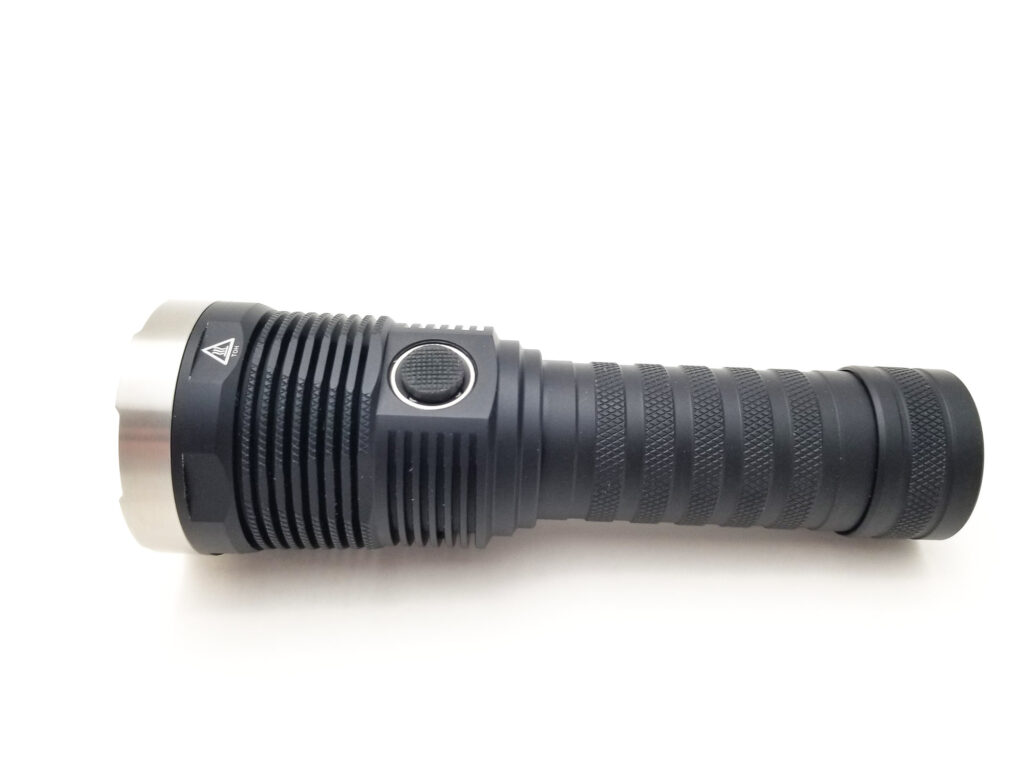
Nightwatch NI03S specs
| Brand & Model | Nightwatch NI03S Super Valkyrie |
|---|---|
| Flashlight category | High output, long throw |
| LED | 1 x SFP55.2L |
| Max. output | 17,000 lumens |
| Max. beam distance | 748 meters |
| Max. beam intensity | ? cd |
| Battery config. | 1×26800, 1×21700 |
| Onboard charging | USB-C |
| Modes | 5 |
| Blinkies | Strobe |
| Waterproof | IP68 |
| Review publication date | May 2023 |
Review intro:
On deck for today is another special light sent from Neal over at Nealsgadgets, so a huge thank you to Neal for this gem. This one’s a single LED high output light, and it’s one I have some experience with. I always get a little excited and maybe apprehensive whenever a Nightwatch light comes across my desk, not because they’re bad, but because I never really know what I’m getting, and it’s that unpredictability I happen to like. It keeps it interesting.
This particular Nightwatch is dubbed the NI03S. The ‘S’ stands for Super Valkyrie. I reviewed the original Nightwatch NI03 Valkyrie in 2021, and found it to be a worthy instrument that Thor himself would have liked to carry around. It featured the then-largely unknown and untested SFN55.2 LED that put out around 7500 Lumens and ran the relatively new 26800 format battery. It had QC charging with power bank capability for added versatility. It also had enough mass and heatsinking to adequately tame the crazy electron gobbling LED.
I was mighty impressed with the first Valkyrie, so how can you improve on that? Well, what puts the ‘S’ in Super, aside from some subtle functional upgrades to the original Valkyrie, is a relatively new LED from the Orient that promises an Odin-sized performance boost. Read on for more and let’s see if the Super Valkyrie can bring down Thor’s thunder!
Package quality.
Okay, so Nightwatch lights don’t parler to fancy, flashy packaging, and every Nightwatch I’ve tested came in a box and that’s about it. Sometimes it was thrashed, sometimes intact. This one spent the extra $10 and upgraded to luxo suite since it came in a plain cardboard. Not only was it not knackered, it even had some nice foam padding. Here’s what I got:
- Nightwatch NI03S flashlight
- 26800 to 21700 adapter tube
- USB type C to type C charging cable
- Instruction sheet
Overall this is more than I got with the last NI03, and I’m glad to see an adapter included since 21700s are more common and plentiful (read: available) than 26800s. The USB cable is a high current braided design that looks high quality instead of the typical thermoplastic. The instruction sheet is nothing more than a piece of printer paper with some marketing blurbs and other specs with operating instructions and features. It’s not in Chinese this time, and was pretty easy to read and the English was legible with a hint of chinglish.
Of note is the lack of batteries. You can get batteries as an option, and I really recommend it since this thing needs a very stout battery to get the most out of it and Neal provides some special Lishen-made 21700s that can handle the current demands of this light, or a 26800 for extra runtime and a bit “less” output.

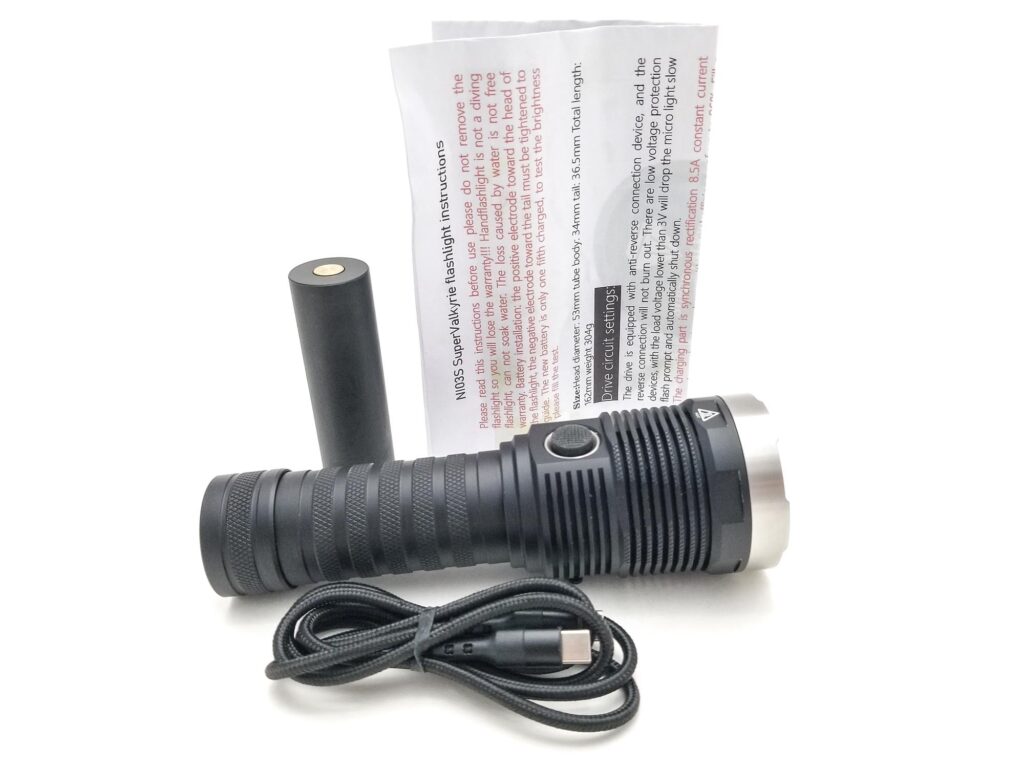
Flashlight in use
The NI03S is every bit as good as the original. After all, it’s the same host, so the handling is the same.
Use cases? It lights up stuff really well, and you can have a little light, or a lot of light. It would be happiest in general purpose use. This is a fairly large, heavy light and not suitable for pocket carry, although I did tote around the NI03 in my jacket pocket and cargo pockets just fine when I went caving. It feels substantial in the hand, and has great heft without feeling overly bulky. There’s plenty of grippy knurling that even extends to the cooling fins. The girthy tube, while better for larger hands, wouldn’t be too unreasonable for smaller mitts.
The switching duties are handled by a single e-switch behind the head. It sits in a stainless bezel in a flat spot and has LED backlights for on state and charging state, and it lights up blue during operation and will show battery state for LVP and for charging status. It’s a snappy, tactile switch with good feedback and a grippy boot. The click action is good, and requires some effort to actuate, which is a good thing, and I think Nightwatch did that intentionally as a safety feature to cut down on accidental button presses. Another safety feature (intentional or unintentional), is the switch requires quick button presses for the shortcuts for Turbo and Strobe. The boot doesn’t sit very proud though, and I did find myself poking at the charge port in the dark instead of the switch. The charge port is redesigned from the original NI03. It’s physically larger and has a sideways lift tab now. It doesn’t sit flush, so it might get snagged on clothing or objects and accidentally open. I didn’t really experience this though, but time will tell.
The tailcap is wide and has a lanyard mounting point that could easily pass ⅛ “ paracord through. Tail stands are pretty stable, but this thing rolls off inclined surfaces.
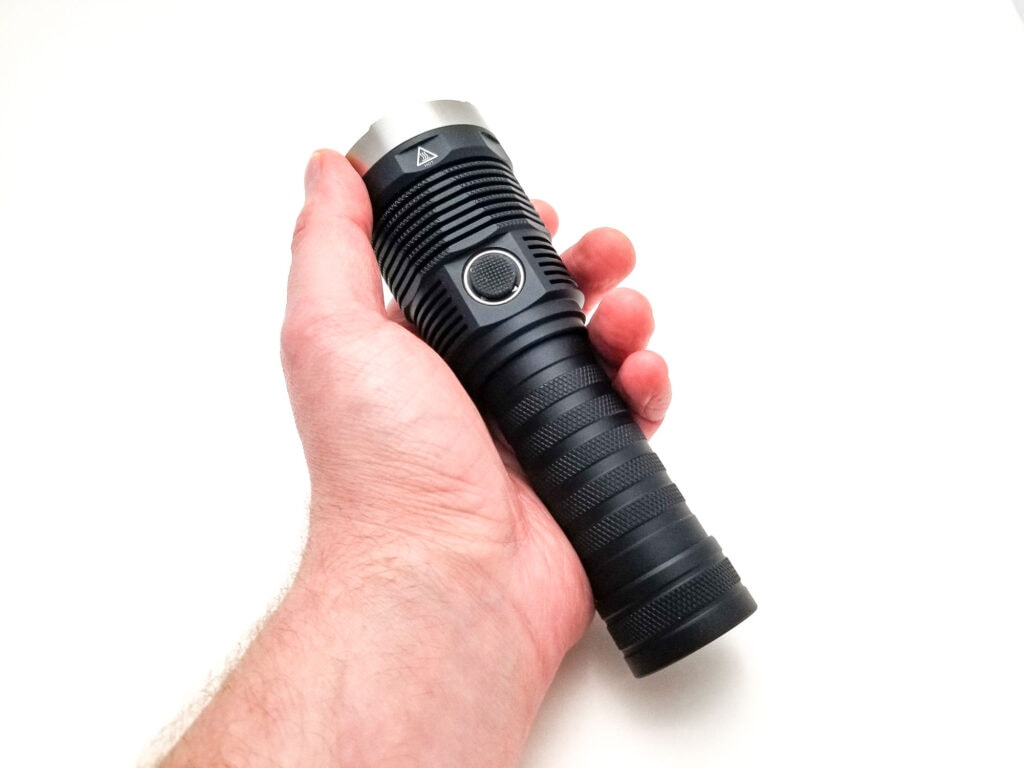

Build Quality and Warranty
Nightwatch lights are generally well-made and the NI03S is no different. Build quality is more than acceptable here, but don’t expect Acebeam or Olight levels of fit and finish or attention to detail. The price? You can pick one up for around $75 US without a battery, and Neal offers this light with both a 21700 for $89.95, and a 26800 for $95.95. Coupons and discounts are available to bring it down some, but overall a good value for a special, nearly one-off flashlight and I think it’s worth it.
Quality-wise, there’s no major faults, and the machining is free of obvious defects or tool marks. The bezel is stainless steel and finely finished with no defects either. I did run into times where the bezel wouldn’t seat right and cause the reflector to shift, causing the LED to become uncentered (there’s no centering gasket).
The lens o-ring doesn’t like being removed either, and parts of it liked to squirt out under the bezel when tightening it down. I had to fight this more than once, so I don’t really recommend removing the bezel unless you really need to or you have a thing for fighting o-rings that don’t seat.
The finish is type III HA, and is pretty matte which I really prefer. It’s nicely done and although there were some, you wouldn’t really notice them without closer inspection. I give it a 9.5 out of 10.
The light is milled from aluminum alloy, so probably 6061-T6. All the edges are knocked down and smoothed as well. If you fancy to do so, the bezel can be unscrewed by hand and you can liberate the lens, reflector, and an o-ring (I don’t recommend this though or that o-ring will fight you).
The MCPCB is properly thick. I didn’t pull it out to measure, but it looks to be thicker than 3 mm. The solder joints look okay, maybe a little iffy, and the LED wires look to be 18 gauge, which is a bit thin for the current this thing will undoubtedly pull.
The driver is held in with a retaining ring secured with two cap head hex screws, and swaps a spring for a very substantial brass slug for the positive contact. The contact surface isn’t well finished though, so it might benefit from some sanding to make it smooth. The tailcap has been refined a bit more from the sloppy, cobbled together unit from the previous NI03. It’s a similar design to the NS59 series lights, with a single seemingly-too small coil spring bypassed with a strip of metal to boost the current handling (and keep the spring from failing).
There’s no PCB for it, just a round piece of copper.
The battery tube walls are thick, a full 2.5 mm thick, so there’s lots of heatsinking. The tube is reversible, and the threads are thick rectangular cut, fully anodized and pretty smooth with plenty of lube from the factory. Both ends are o-ring sealed, as is the bezel and lens. For ingress protection, there’s nothing mentioned in the manual, but Nealsgadgets says IP68, so use your imagination. I think this light would be okay for temporary immersion or heavy rain though.
For the warranty, it’s handled by Nealsgadgets, and Neal will take good care of you if something goes wrong with the light (defective, DOA, etc.).
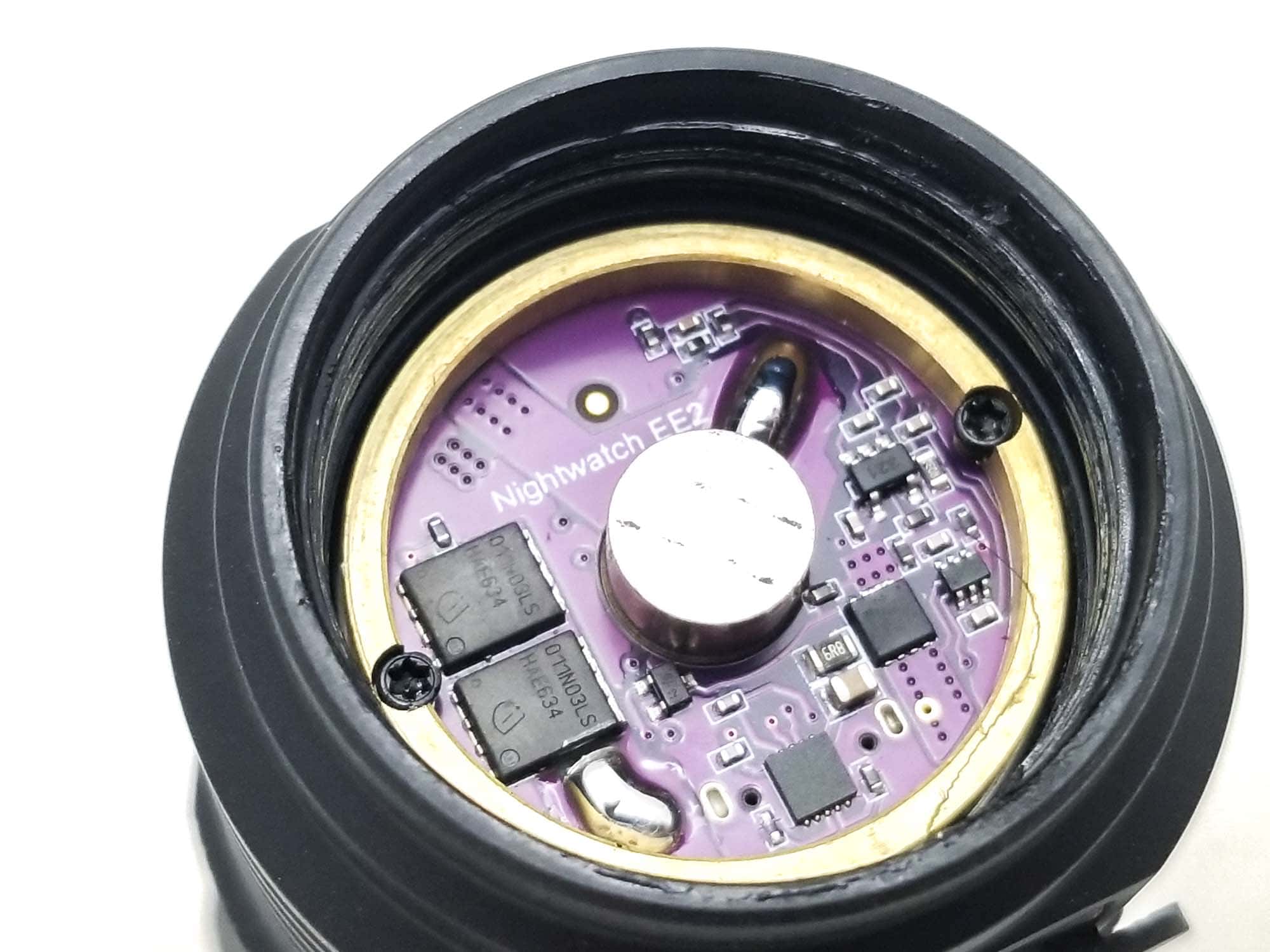
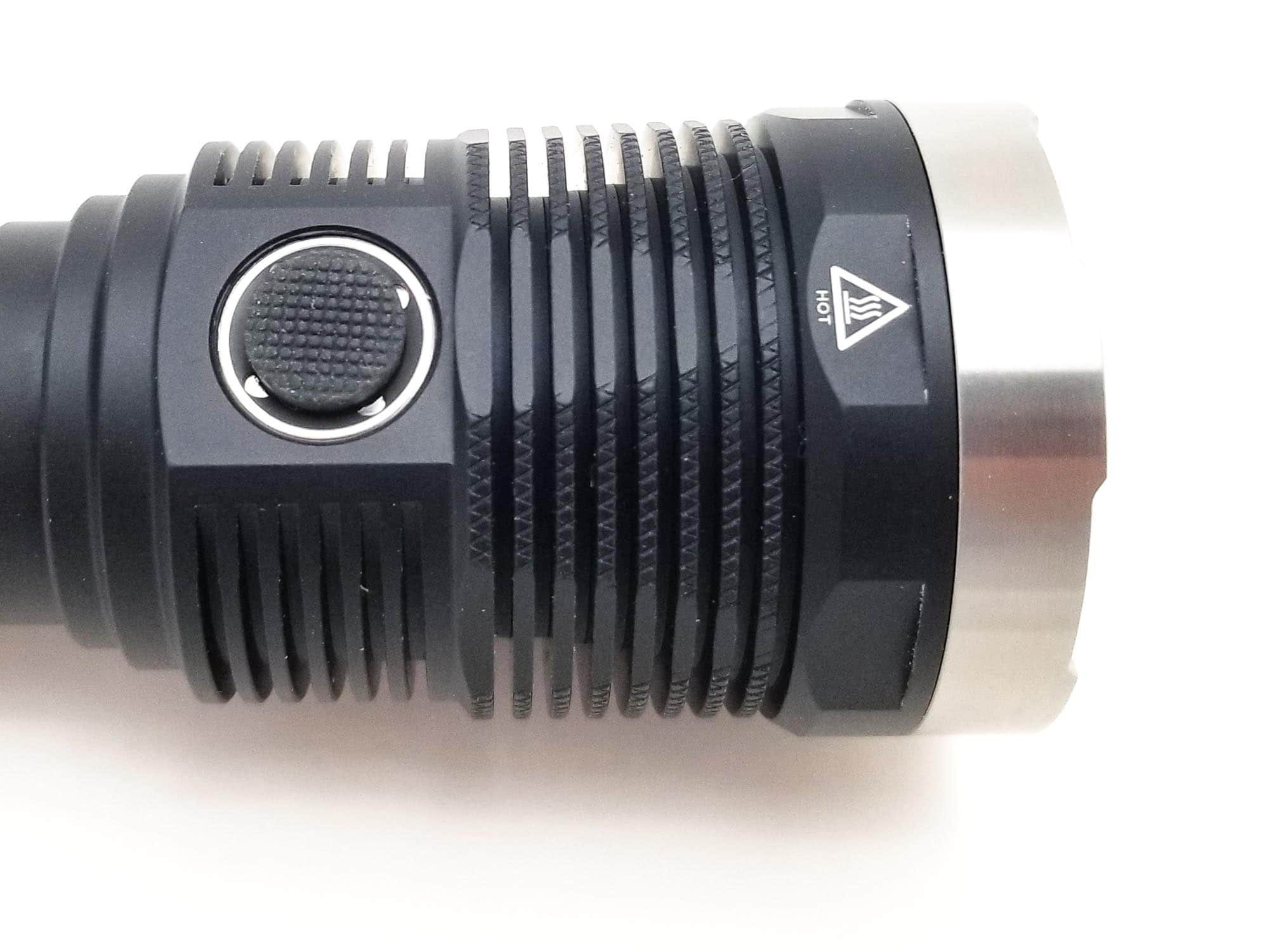
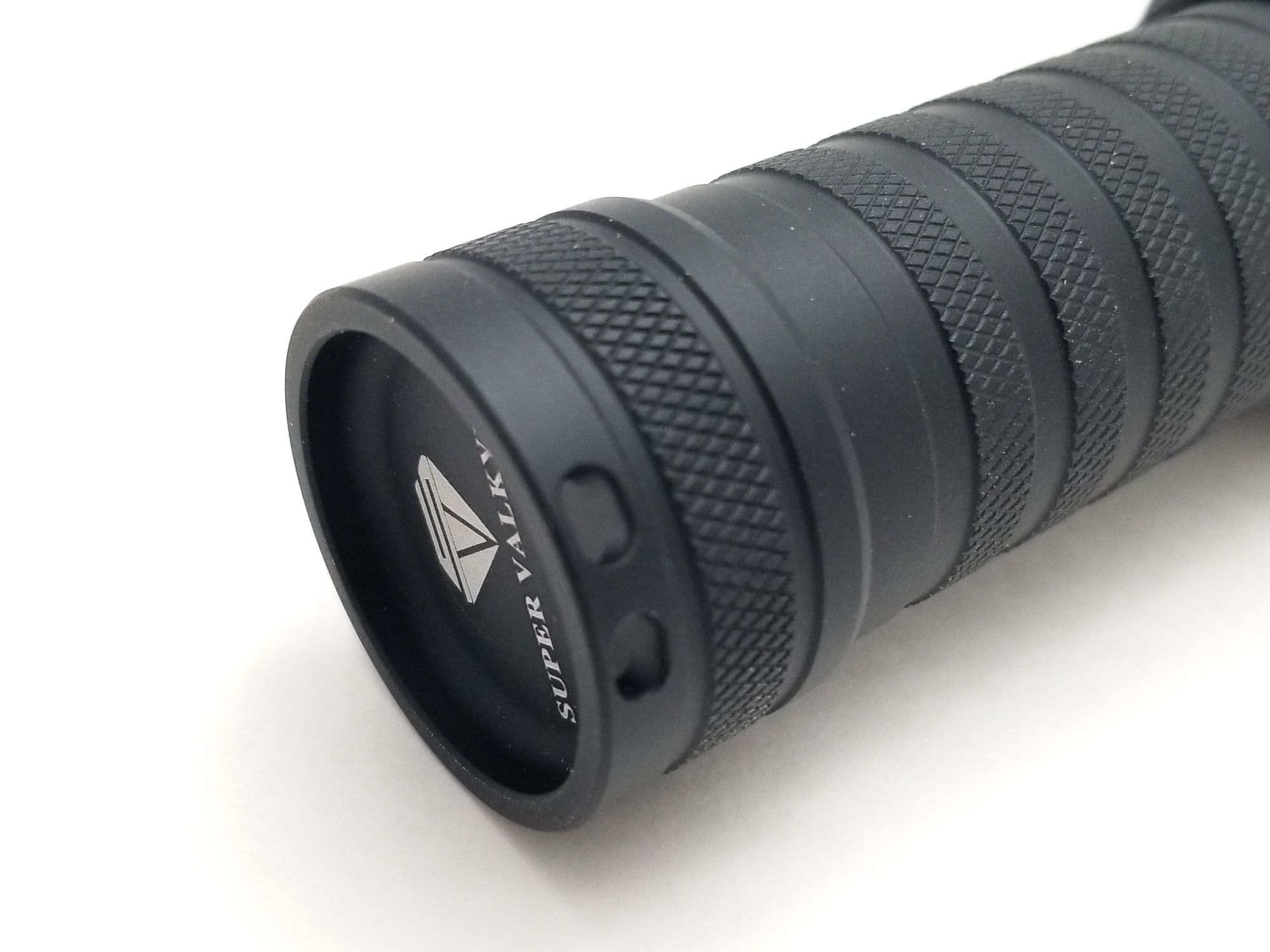
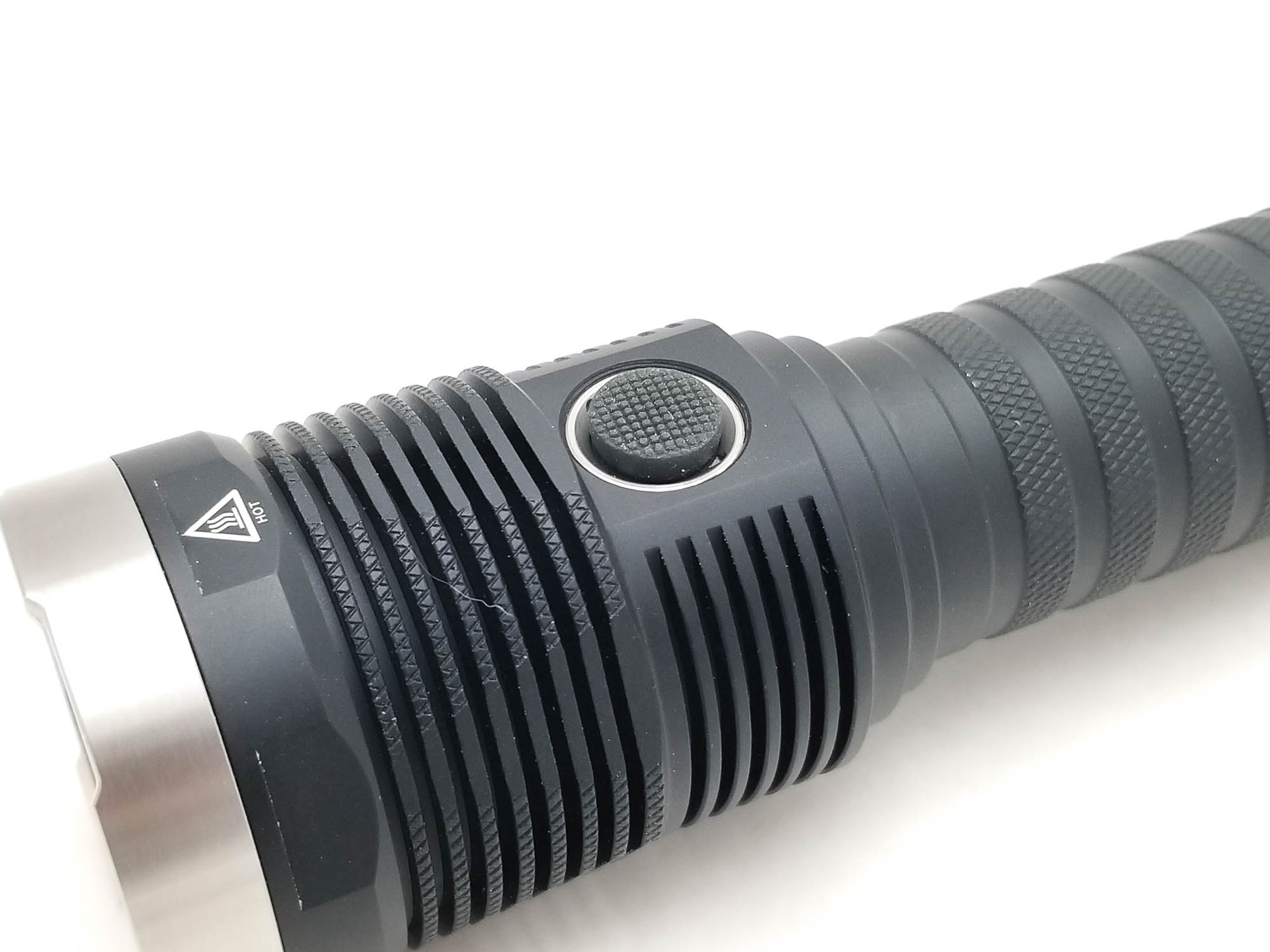
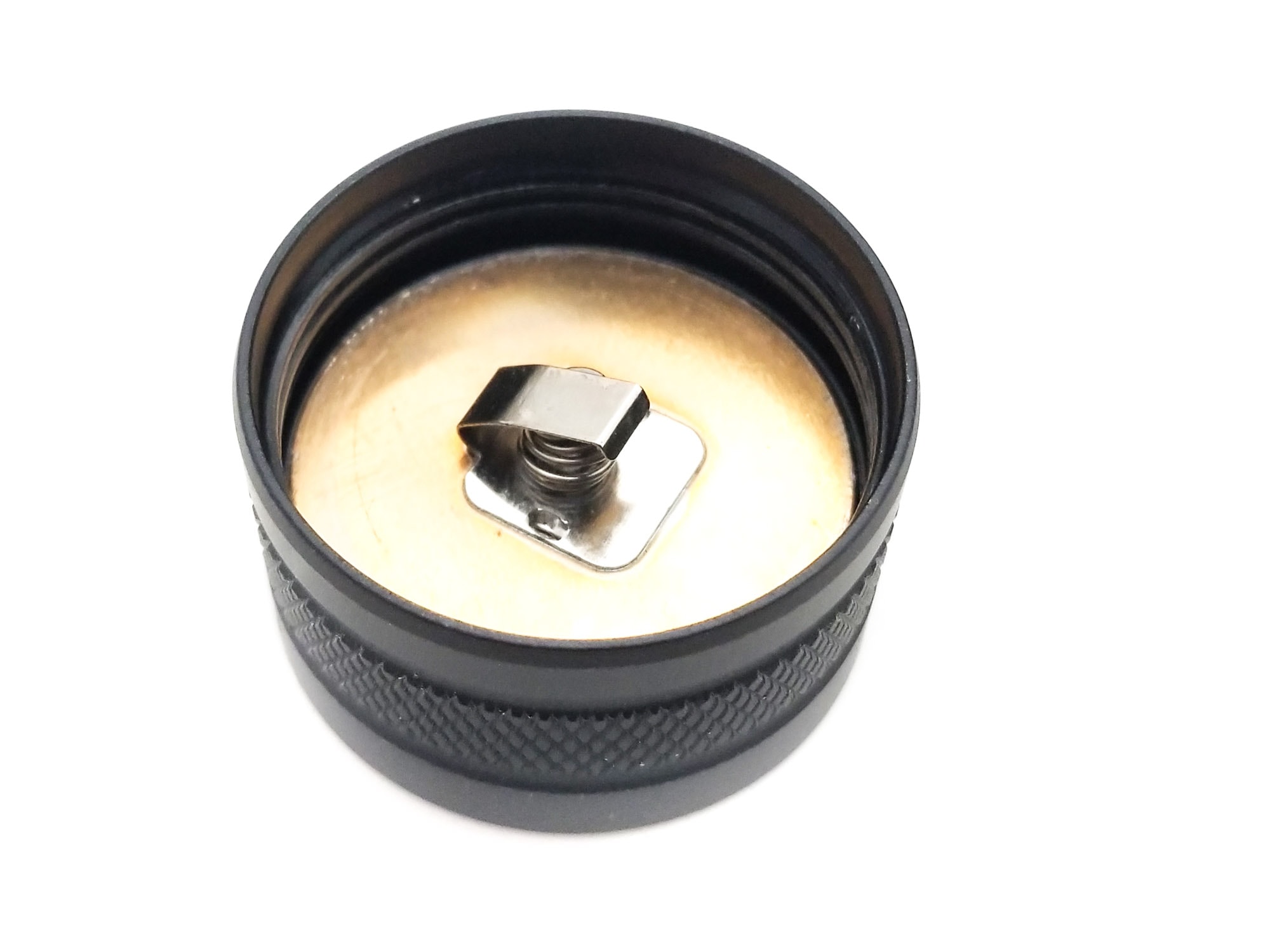
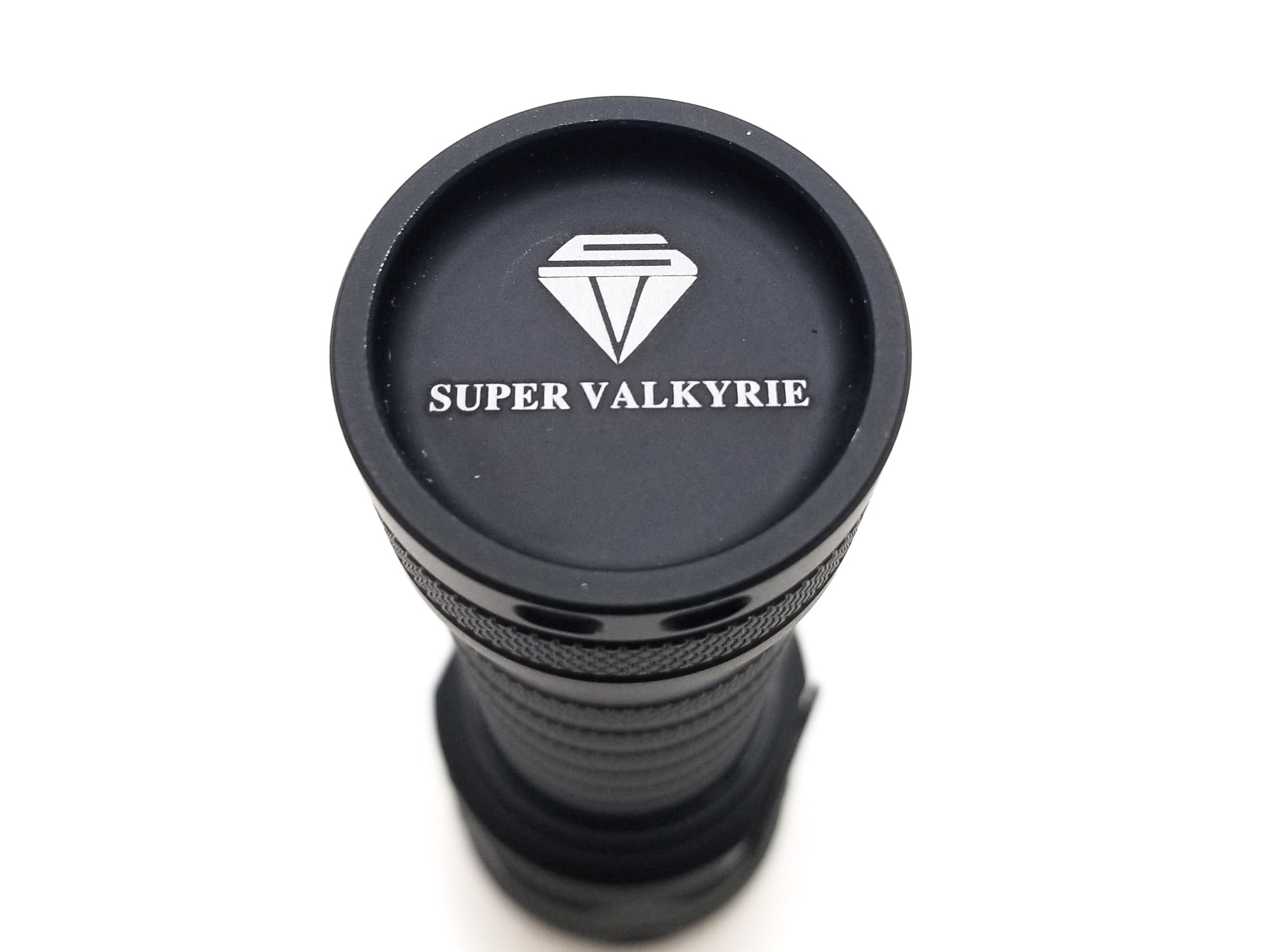
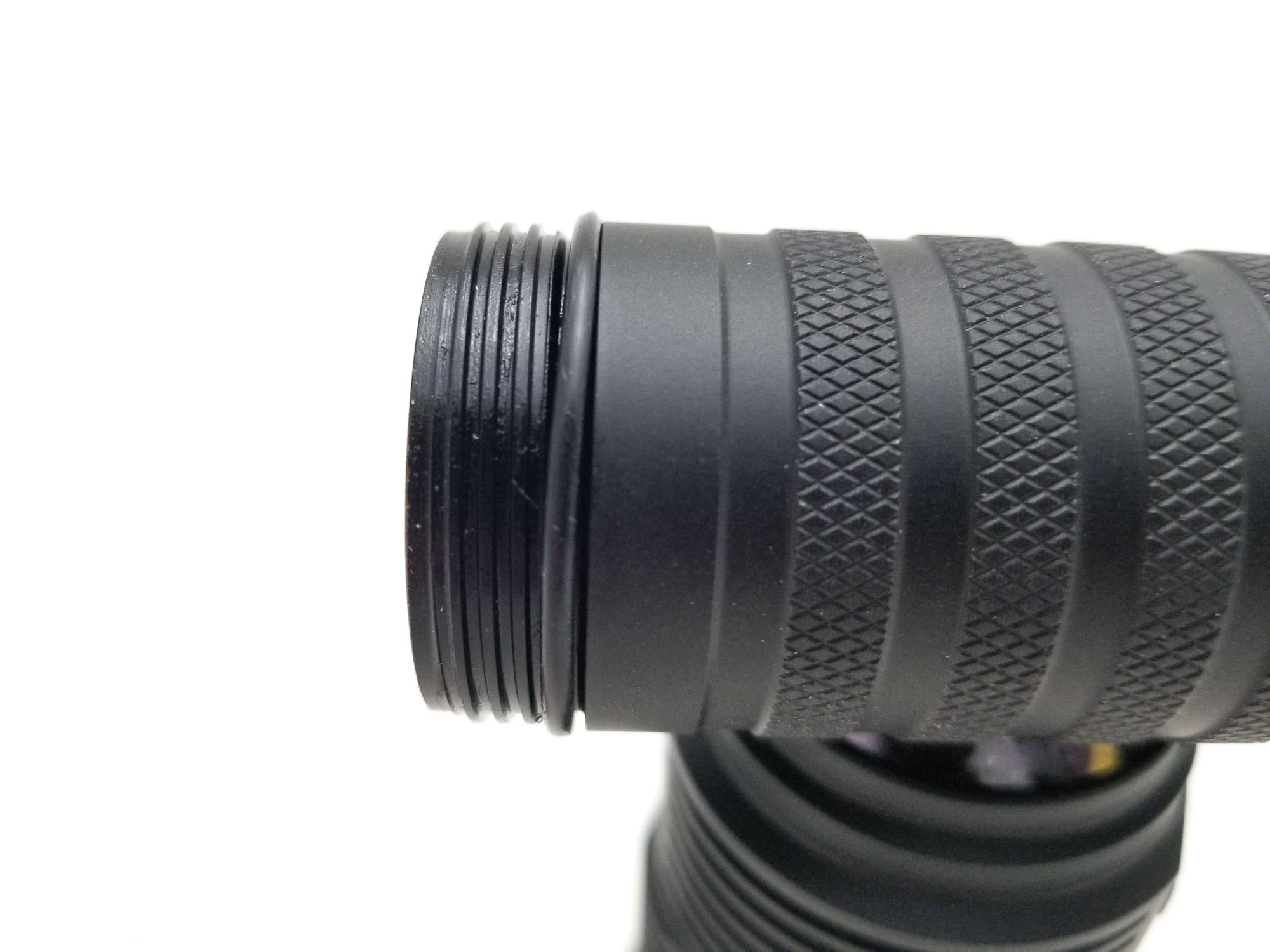
LED, Lens, Bezel, Beam, and Reflector
Here’s where the NI03S gets the S. LED tech has come a long way from the XM-Ls of years past, and now we have some seriously legit LEDs coming out of China from manufacturers that prefer to remain anonymous. We’ve seen them before in Nightwatch lights and some others like the Lumintop D3, Rattlesnake, and some Astrolux/Mateminco lights, but this one is a newcomer to the flashlight scene and I suspect it wasn’t designed for use in flashlights, but hey, neither was the SBT90.2.
SFP55.2L LED
The previous Valkyrie fielded the SFN55.2 LED. The Super Valkyrie features an LED that may make it the brightest single cell, single LED flashlight. The LED is the SFP55.2L. This one is an 11×11 mm footprint substrate with 25 individual light-emitting elements (dies) in a 5×5 grid making up the LES. It’s a 3 volt LED and it’s domeless for increased cd/mm2 and better throw.
The claimed output? The instructions say in excess of 18,000 Lumens while pulling 60+ amps, so it surpasses the previously most-powerful SFH55 by a fair margin. For comparison, the NB90.16 (SFH55 variant) I tested in the Amutorch XT60 hit nearly 10,000 Lumens. The SNF55.2 hits about 7500 Lumens in the previous Valkyrie (the review light was re tested later with a stouter battery). The CCT is unspecified, but probably cool white around 6000-6500K.
The bezel is stainless steel with crenulations and extends above the lens about 4 mm for drop protection. The lens is a mineral glass unit with a green AR coating on both sides to cut down on the green tints. The reflector is an aluminum light orange peel deep cup unit. As previously mentioned, that huge LED wasn’t that well centered and didn’t have any centering gaskets or insulators.
It didn’t seem to affect the beam though, which has a lot of spill and a nearly invisible hotspot. It’s pretty clean with great reach for a big LED.
On lower settings, it’s actually a nice general purpose beam for bumping around. There’s none of the discernable tint shift and chromatic aberrations I see with domed Cree XHP LEDs either, which is nice and something I like about these LEDs.
For tint, at 1 meter from the sensor on Turbo, the Opple lightmaster Pro shows 7227K and 71.6 CRI Ra. The duv is -0.0032 and overall the tint isn’t bad for a cool white LED.
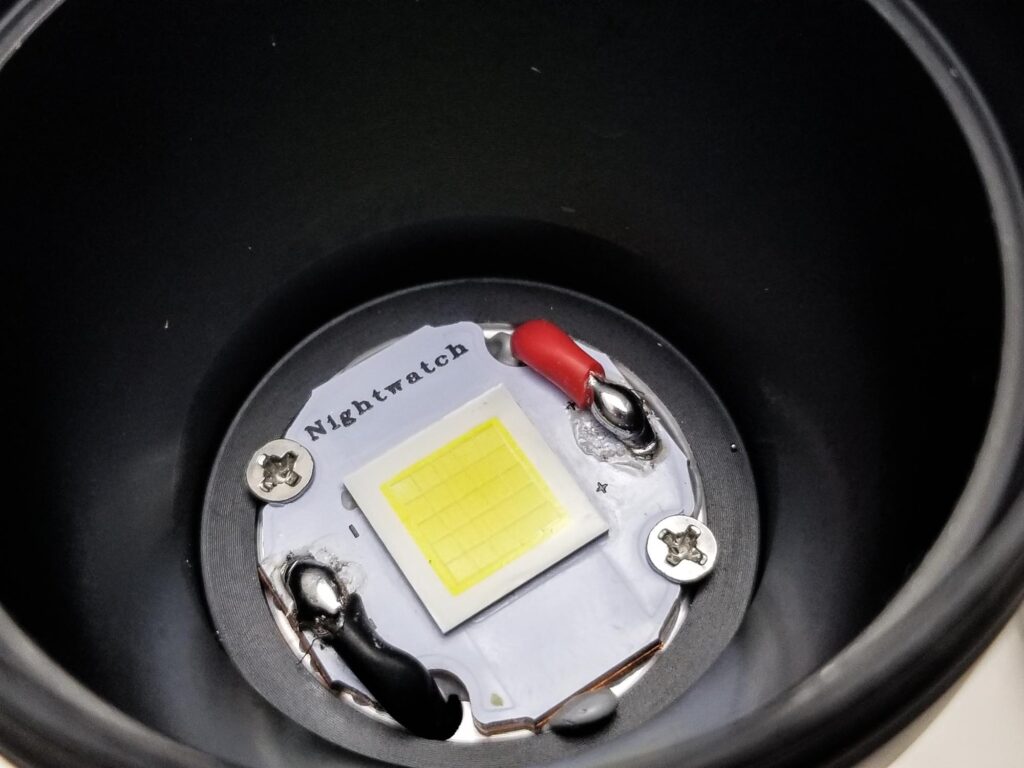
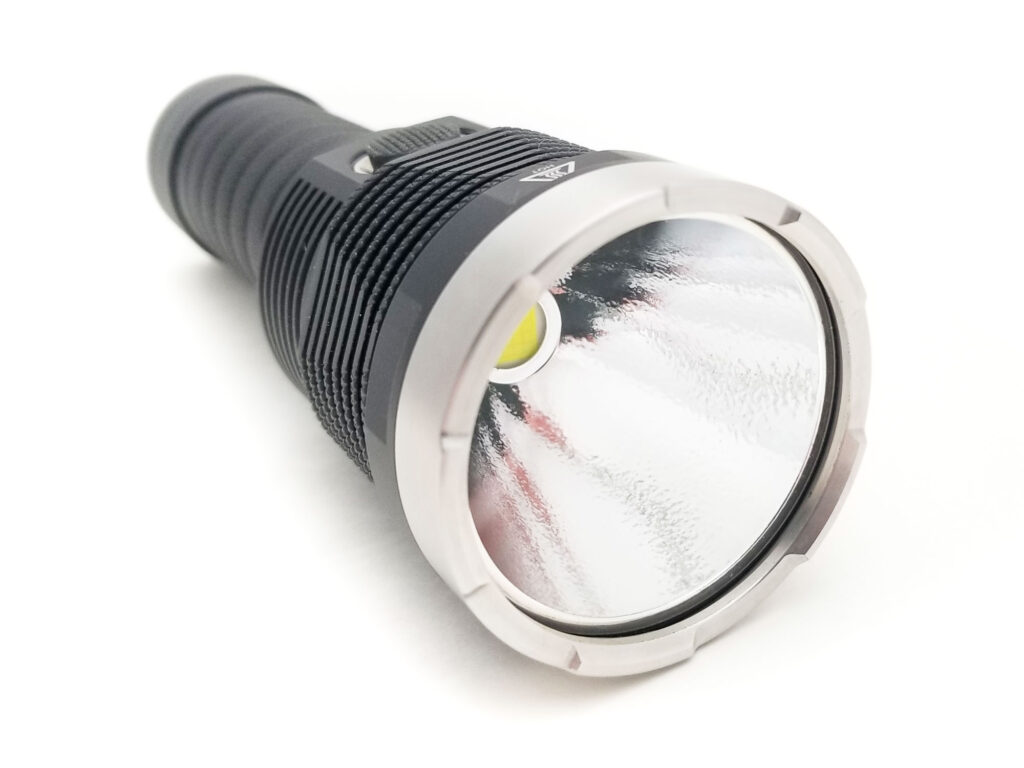
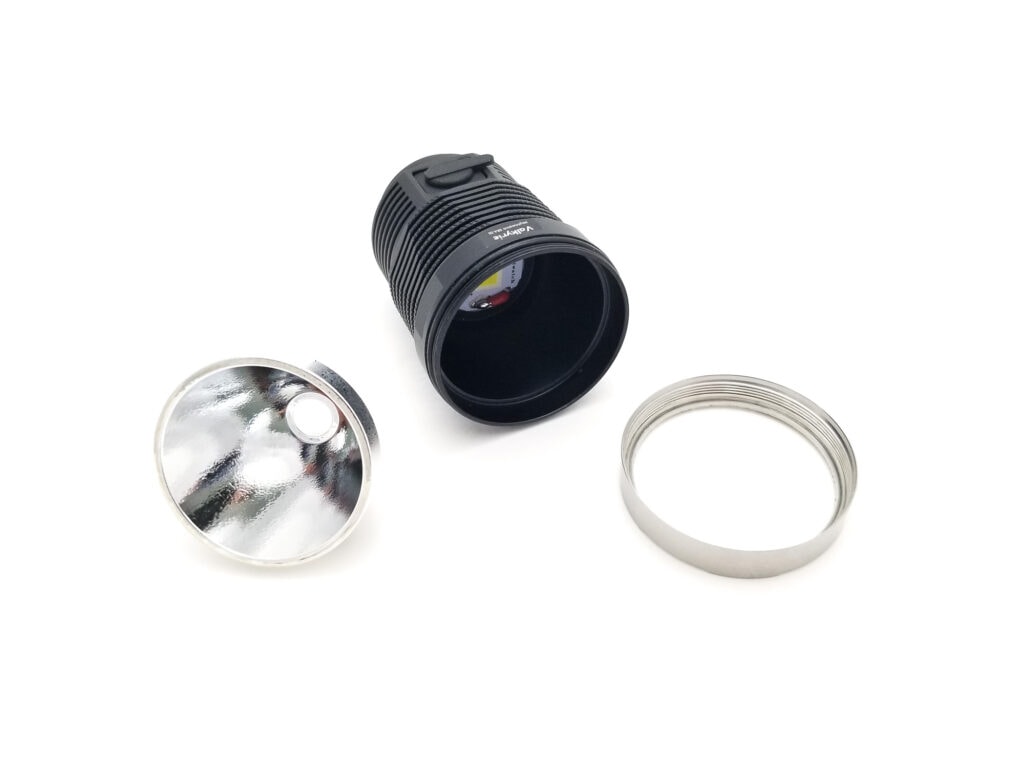
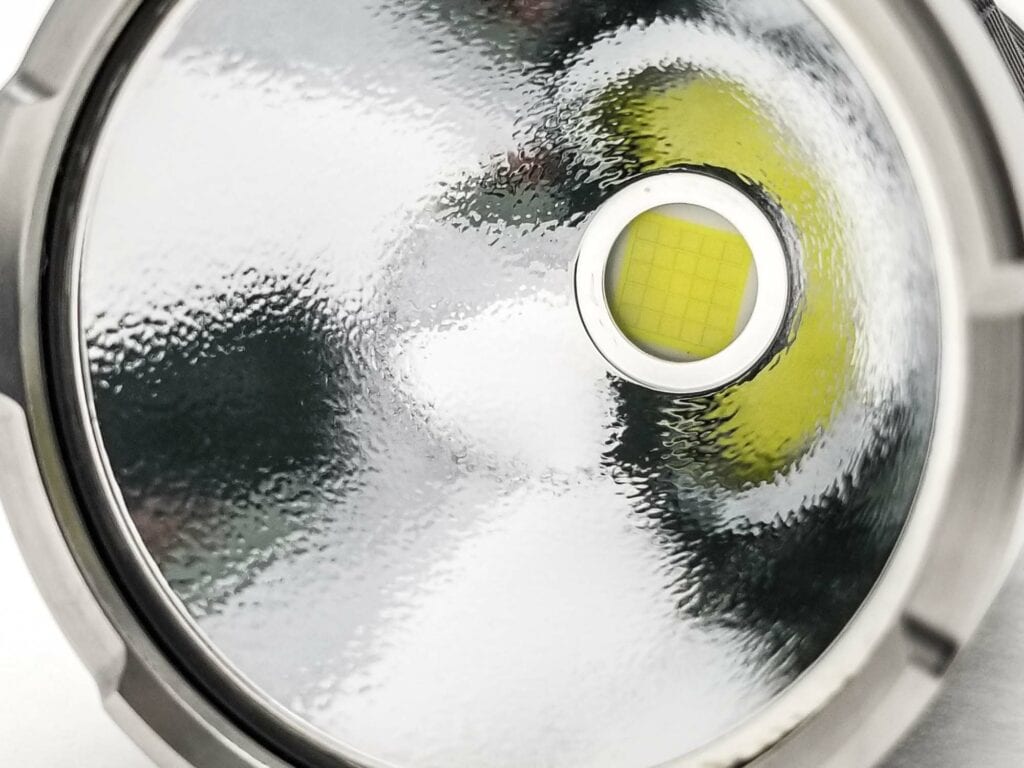
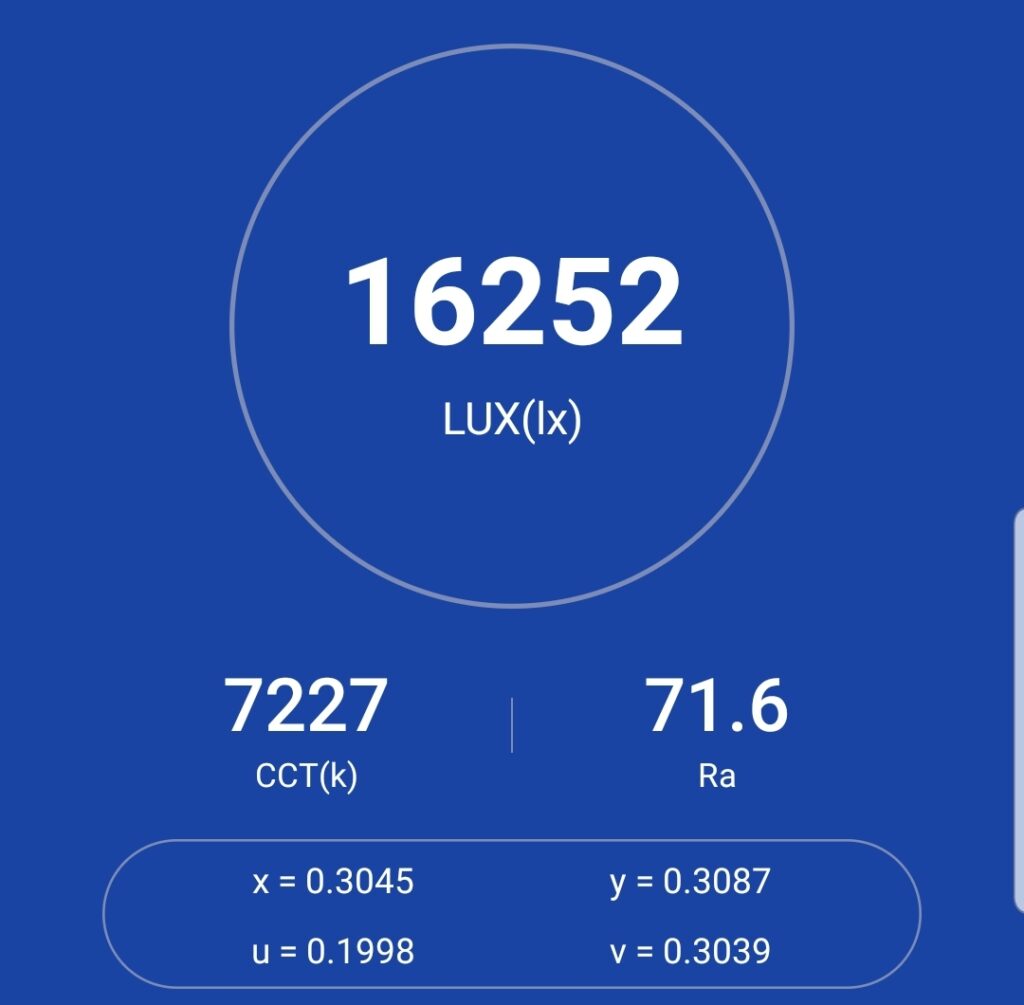
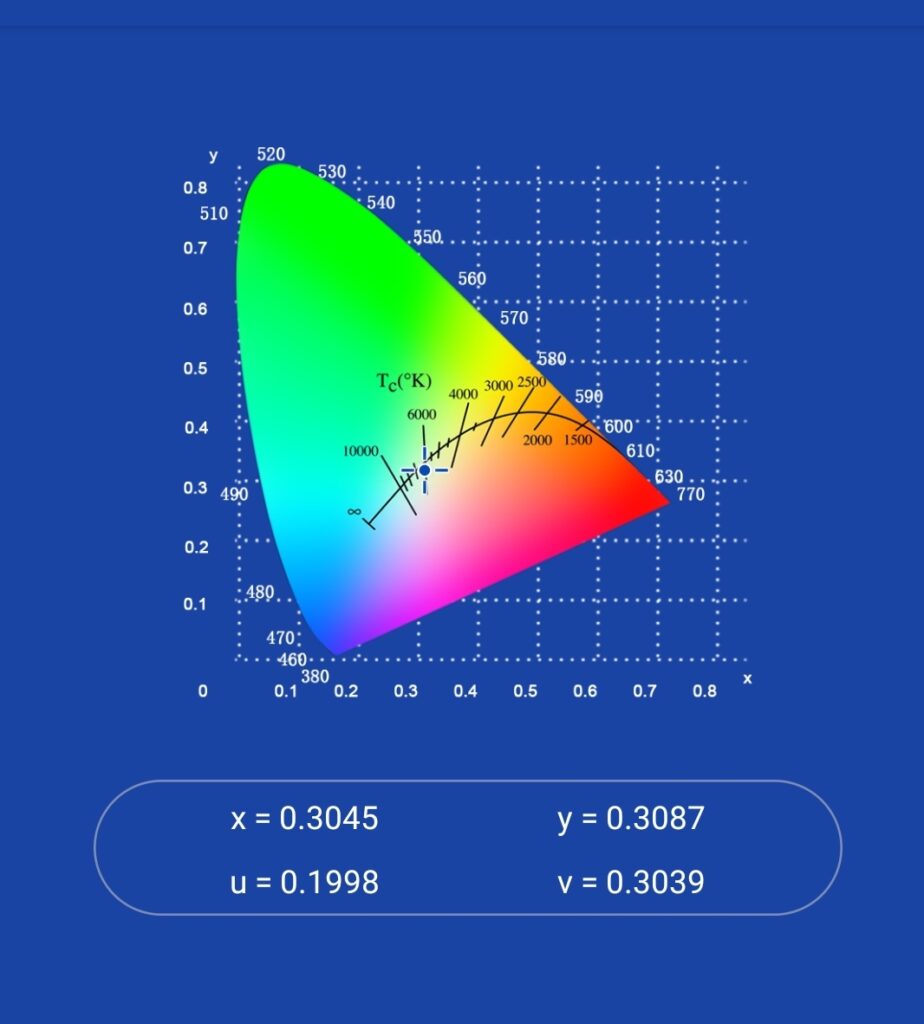
Dimensions and its competition
Dimensions:
| Nightwatch NI03s | Millimeters | Inches |
|---|---|---|
| Length | 162 mm | 6.4 in |
| Head diameter | 53 mm | 2 in |
| Body diameter | 34 mm | 1.3 in |
Dimensions are rounded to the nearest millimeter, and to the nearest tenth of an Inch.
Weight:
| Nightwatch NI03s | Weight in grams | Weight in oz |
|---|---|---|
| Without batteries: | 336 g | 12 oz |
| With Samsung 50S | 406 g | 14 oz |
| With 6800 mAh 26800 | 448 g | 16 oz |
Weight is rounded to the nearest gram, and to the nearest tenth of an Oz.
Flashlight size comparison with its competition:
Group 1 left to right some of the brightest flashlights: Lumintop D3, Nightwatch NG01, Nightwatch NI03S, Amutorch XT60 NB90.16, Amutorch XT45 NB90.16, Nightwatch NI03
Group 2 left to right: Nightwatch NI03S, Thorfire C8
Group 3 reflectors left to right: Nightwatch NI03S, Amutorch XT45 (with NB90.16/SFH55), Nightwatch NI03 (with SFN55.2)
Group 4: Nightwatch NI03s, Nightwatch NI03
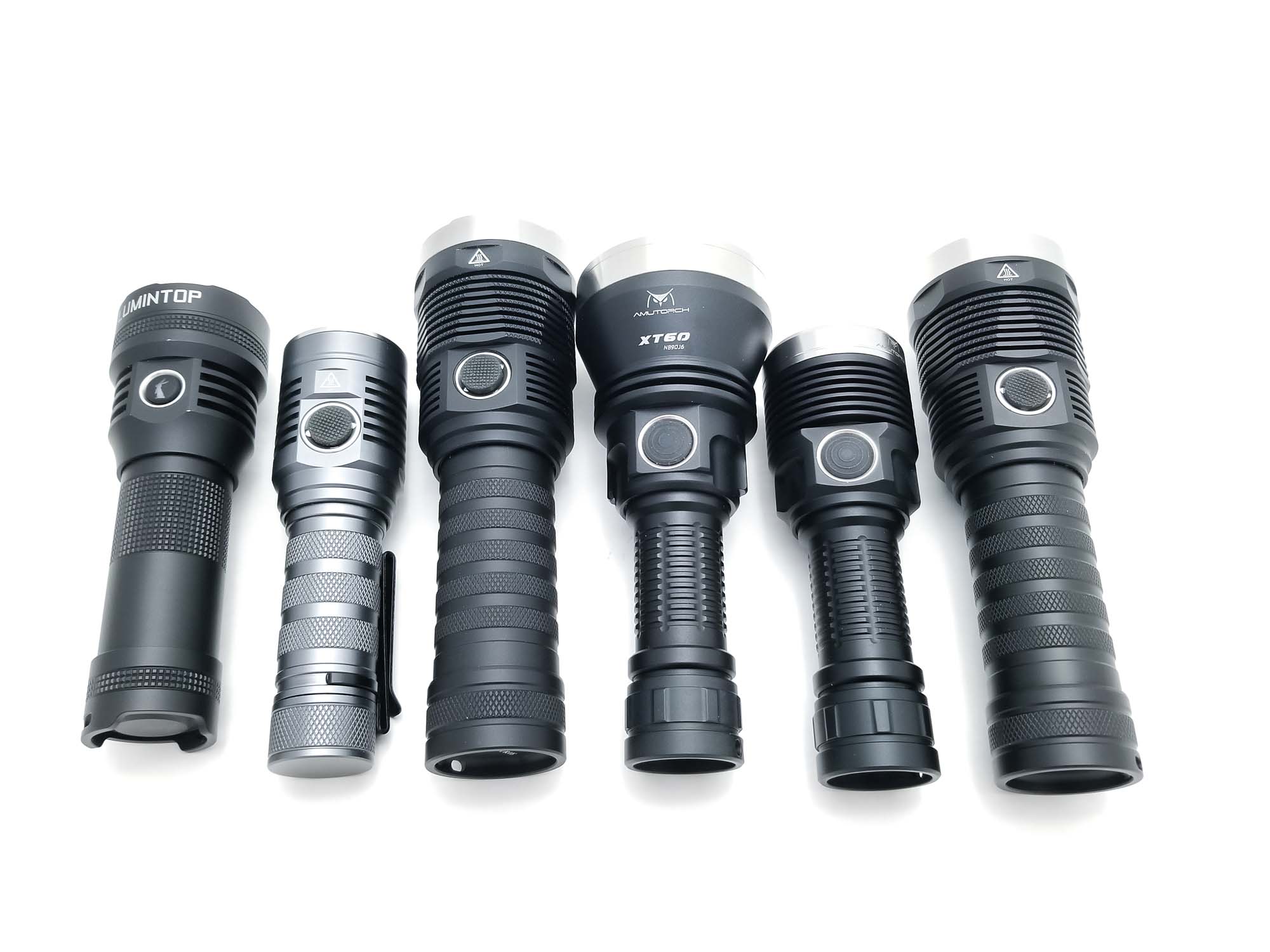
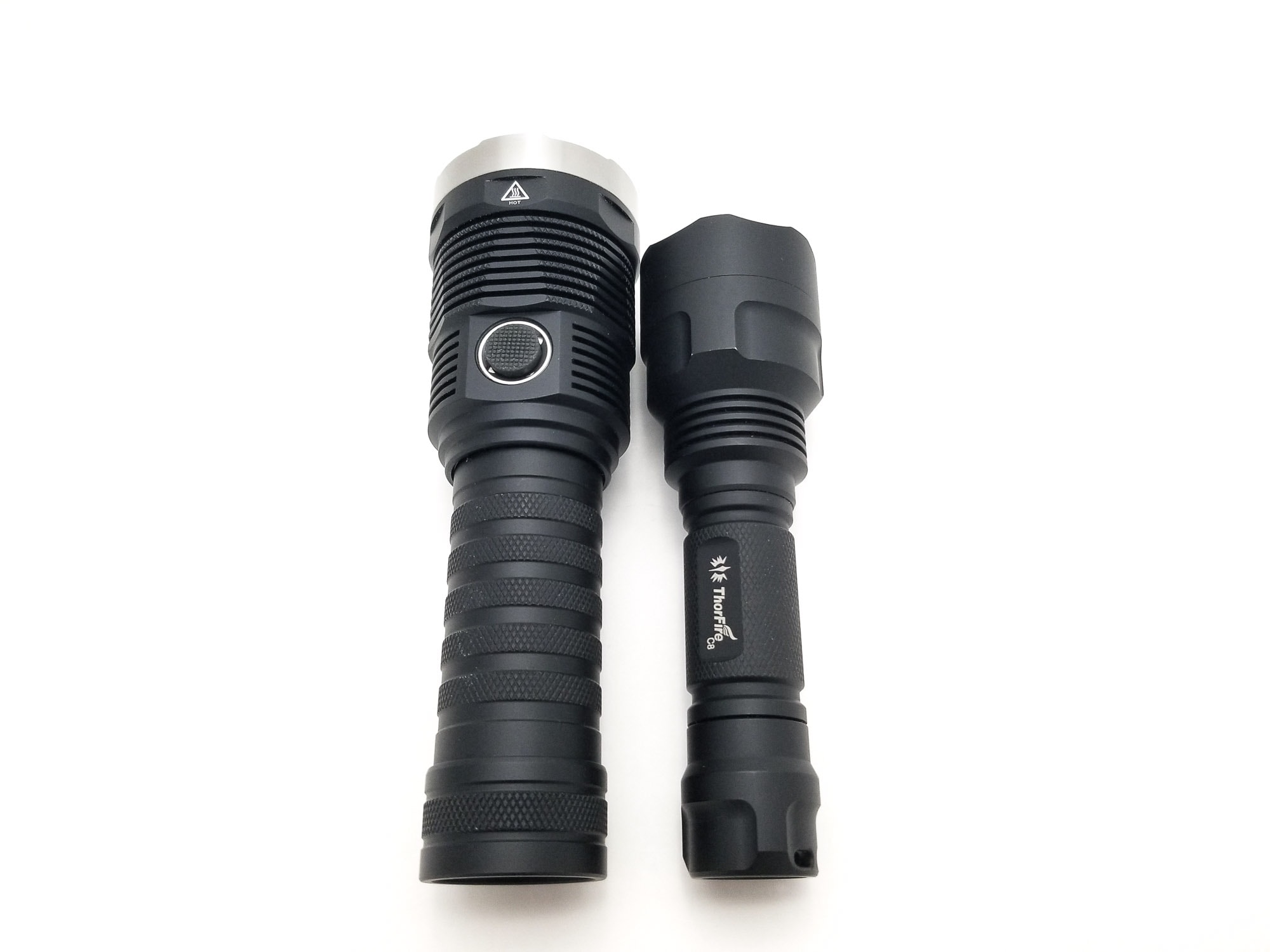
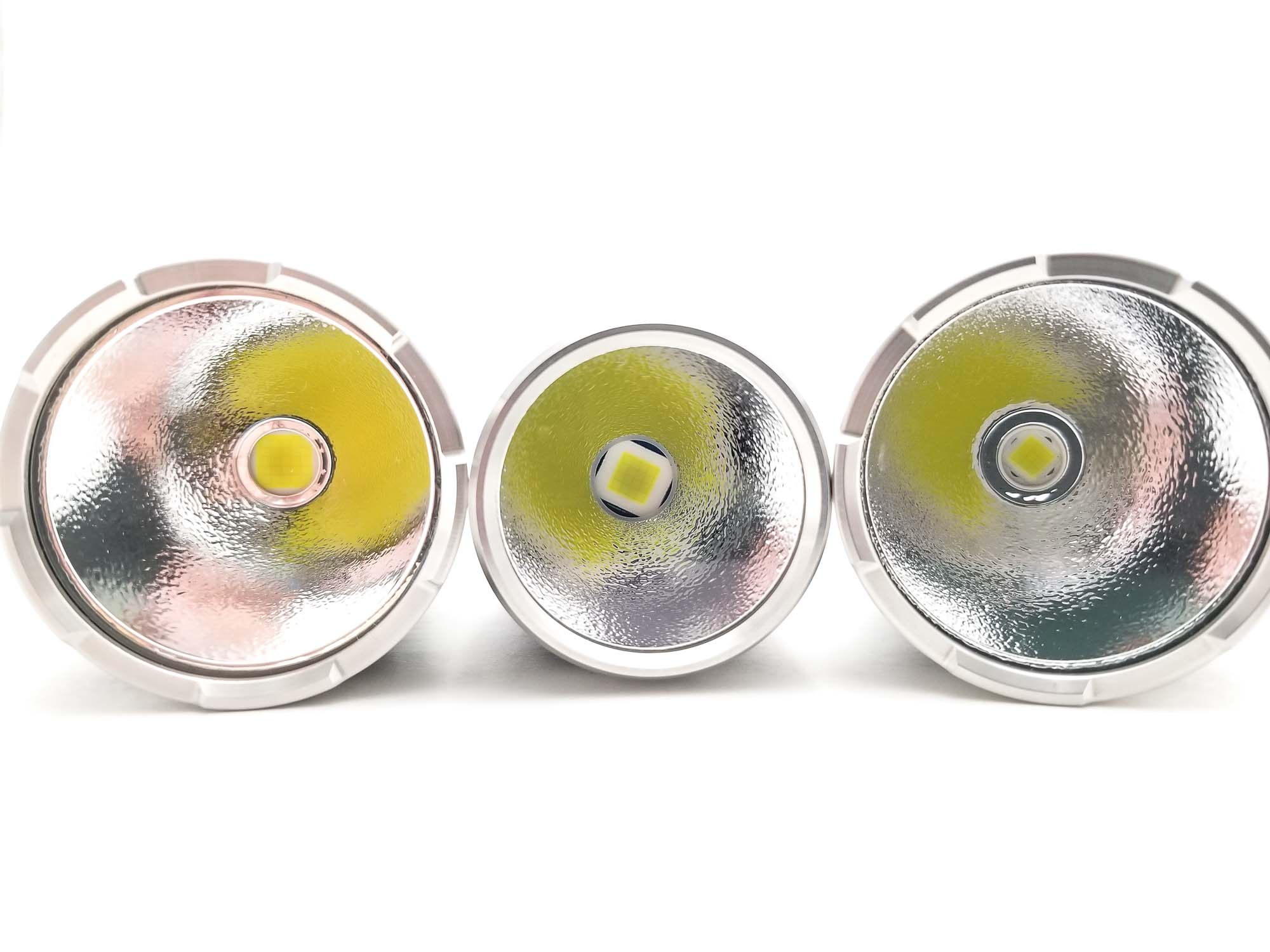
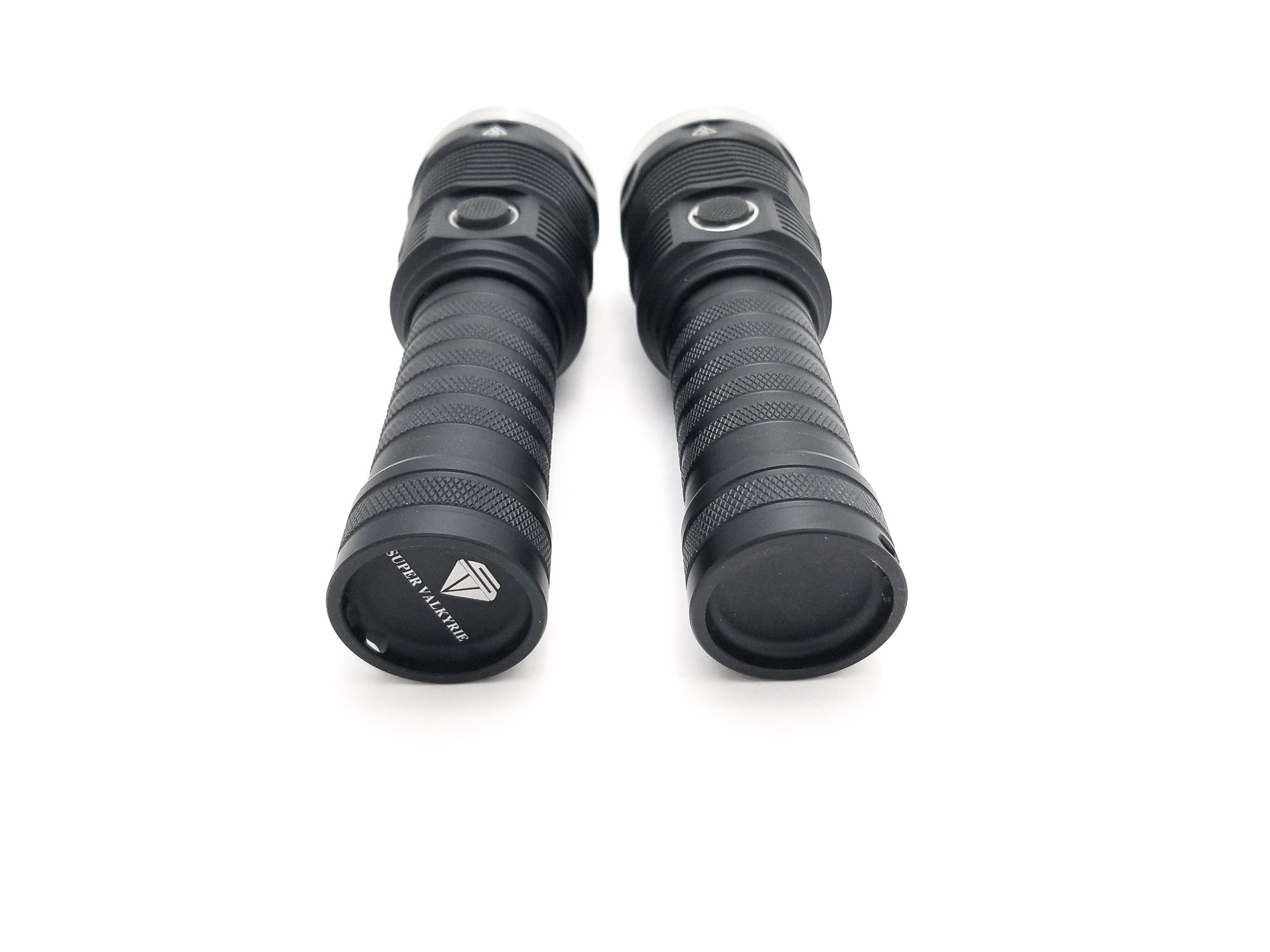
Nightwatch NI03s UI: User Interface and Driver
This light runs a single cell 3 volt LED, so it either has a FET driver or a buck driver with a FET channel. I’m leaning towards the former because it’s cheap and easy to manufacture. The runtimes will tell. The UI is a bit different from the original NI03, adding two modes, but remains a pretty straightforward setup. It’s still a press and hold for on and off with standard modes plus Turbo and Strobe. The manual lists the modes as percentages of output, but the product page shows the mode names.
Available modes:
- Low: 3%, Middle 2: 8%, Middle 1: 15%, High: 25%, Turbo: 100%
Available blinky modes:
- Strobe
From OFF:
- Click and hold switch for about 0.3 seconds: Turns on
- Double click switch: Turbo
- Triple tap switch: Strobe
From ON:
- Click and hold switch for 0.3 seconds: Turns off
- Single click switch: Changes modes
- Double click switch: Turbo
- Triple click switch: Strobe
Mode memory:
- Last mode memory for the main mode group L-M2-M1-H
Shortcuts:
- Double click for Turbo
- Triple click for Strobe
Low voltage warning:
- The light is supposed to have LVP set to 3 volts under load. There should be visual LVP notifications per the manual, and when the battery reaches about 3 volt under load, the output drops low and the switch LEDs turn red. The light does show visual LVP, blinking intermittently for the last 5 or so minutes of the runtime before shutting off.
Strobe/blinkies
- Strobe
Lock-out mode:
- Electronic lockout with 4 fast clicks from off. Repeat to unlock. Manual lockout also possible by unscrewing the tailcap ⅛ turn
PWM
- Fast PWM on all modes not visible with the naked eye
Additional/summary info on the UI: Once again, this is a pretty simple and straightforward UI, typical of Nightwatch UIs. The modes are a bit different on this version, and I actually think the extra modes are a bit unnecessary, but welcome nonetheless. I’m usually not a fan of press and hold for on and off, but honestly, I’m not bummed about this. I think it’s a safety feature to keep accidental activations down, since this thing will burn stuff on High and Turbo.
The double click for Turbo also requires quick clicks that are precisely timed, faster than an Anduril or other UIs I’ve encountered, even besting the often-touchy Thrunite Turbo activations. I think this is another safety feature so you’re deliberate about activating Turbo, a bit like the Valkyrie is asking, “Are you really sure you want to do that?” There’s a 65 C thermal limit for the step down, and a 55 C ceiling for thermal regulation along with obligatory LVP set to 3 volts under load. The manual specifies the temperature probe is external (not built into the driver), and measures temperature at the MCPCB, which would save the LED from roasting itself alive, with the added advantage of faster thermal throttling (and step downs unfortunately).
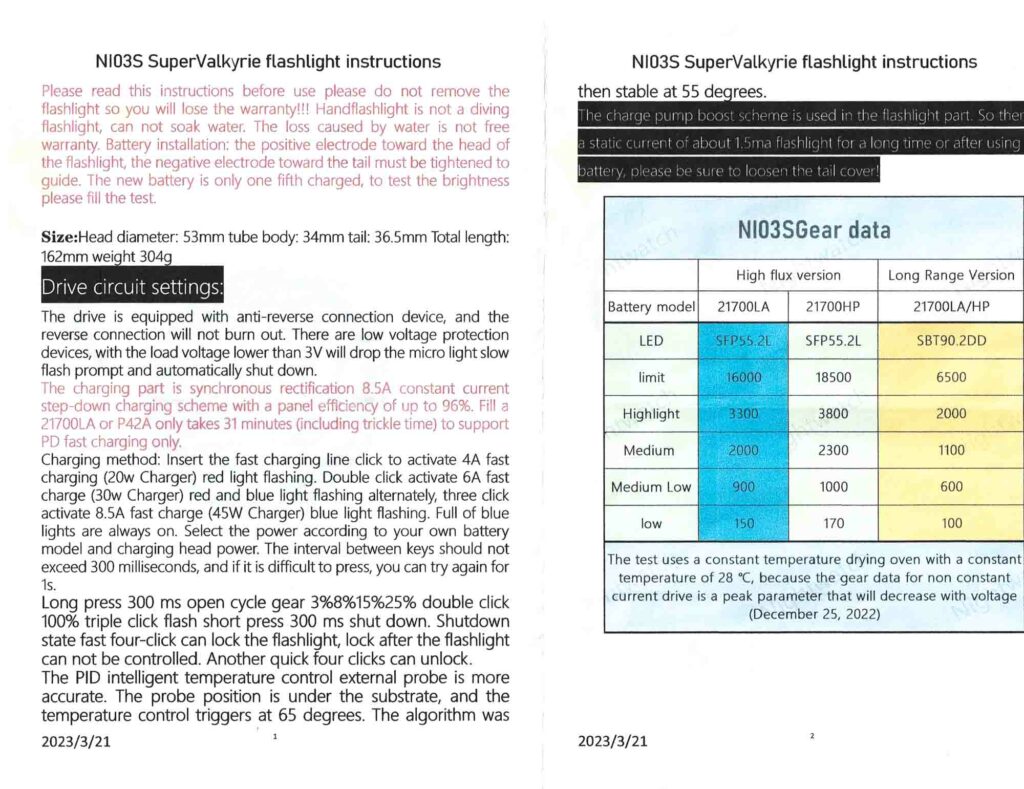
Nightwatch NI03s Charging and batteries
The Valkyrie (in both standard and S trim), is a 26800 size light by default, but if you make an adapter, a 21700 fits fine. I made an adapter for the last Valkyrie out of rolled up cardstock glued together, but I was glad to see that the new Valkyrie includes a sturdy plastic adapter this time. It fully houses the cell except the negative end, and has a finely machined brass button for the front contact. Due to the high current demands of this light, it is recommended to use high drain cells capable of handling 40 or more amps, so that cuts the list of compatible cells down to either the Samsung 30T, Molicel P45B, Samsung 40T, Molicel P42A, or Neal’s special high current 3000 mAh Lishen LR2170HP cells he sells with the light.
You can use lower-current cells, but I really don’t recommend it. The light won’t run at max output, and clicking into Turbo might damage the batteries (pop their overdischarge fuses). The light digested standard button top 21700s, protected and standard flat tops, but my longest 21700s with button tops and charging circuits were too long. The light features onboard charging over USB type C, and this light employs a super unique charging algorithm and impressively high charge currents, but they seem a bit dubious.
Per the instructions, they say it charges a 4000 mAh battery (they specify a Lishen 21700LA or Molicel P42A) in 31 minutes! There’s three charging modes that seem to be largely dependent on the charger you’re using. Charging doesn’t start when you plug in the USB cable. You must click the switch to activate charging.
Change the charge speed:
The different charging speeds are represented with different colors from the LEDs under the switch. From the manual: “Click to activate 4A charging (20W charger), red light flashing. Double click activate 6A charge (30W charger) red and blue flashing alternately, three click activate 8.5A fast charge (45W charger) blue light flashing.”
Obviously, there aren’t any batteries that can handle an 8.5 A charge current, and even 6 A for the 26800 is really pushing it. Some high current 21700s can approach a 6 A charge rate, but for cell longevity, it isn’t recommended. Of course, I tested this, and connected the included type C to type C cable to a 45W PD wall wart. In the “8.5A” mode I saw a max of 20 volts and 1.8 amps for about 37 watts, and switching to the 4A setting netted about 22 watts. The 6A setting overloaded my QC2.0 PD power bank, so you really need a minimum of a 45W power brick to fully utilize the charging capabilities of the NI03S. Of note, maybe my sample was defective, but I couldn’t get the light to charge off a standard power source.
According to the Ruideng AT35 USB tester, when plugged into a standard USB A port on a 5 volt charger, the voltage held at 5 volts, and the current never rose over .0085 amps, so it basically won’t charge unless connected to a QC or PD power supply.
This is a big problem in the event you need to charge up and you don’t have access to a QC or PD power supply, especially if using the 26800 cell at a time when 98% of all hobby chargers do not support that battery size format.
During the charge cycle on a drained 26800 on the max setting, the head of the light heated up to 41 C, so there’s some serious power going through this thing. Sadly, the power bank feature from the prior Valkyrie doesn’t seem to have been carried over to this one, and that’s a major drag since I really liked using that big 26800 battery as a power source.
However, I’m glad to see Nightwatch employ this type of charging in the Super Valkyrie since it can really take advantage of both the higher charge currents and larger capacity of 26800 cells. As far as I know, it’s the only single cell flashlight to support this fast charging. The battery read 4.2 volts on the nose after a full charge cycle.
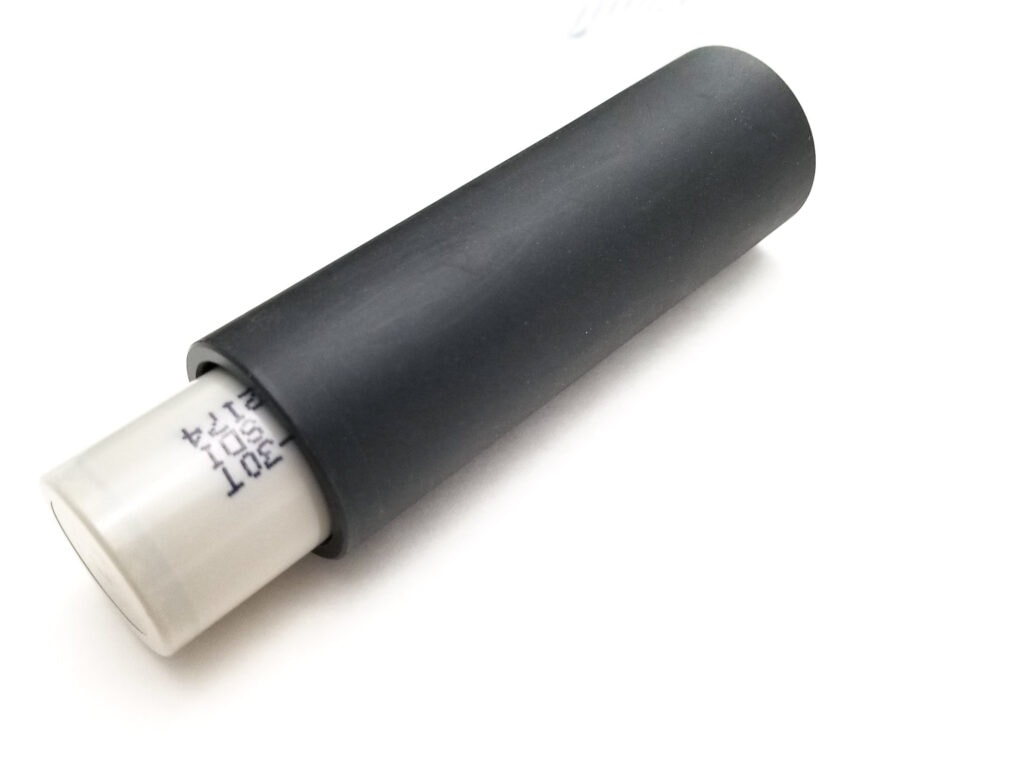
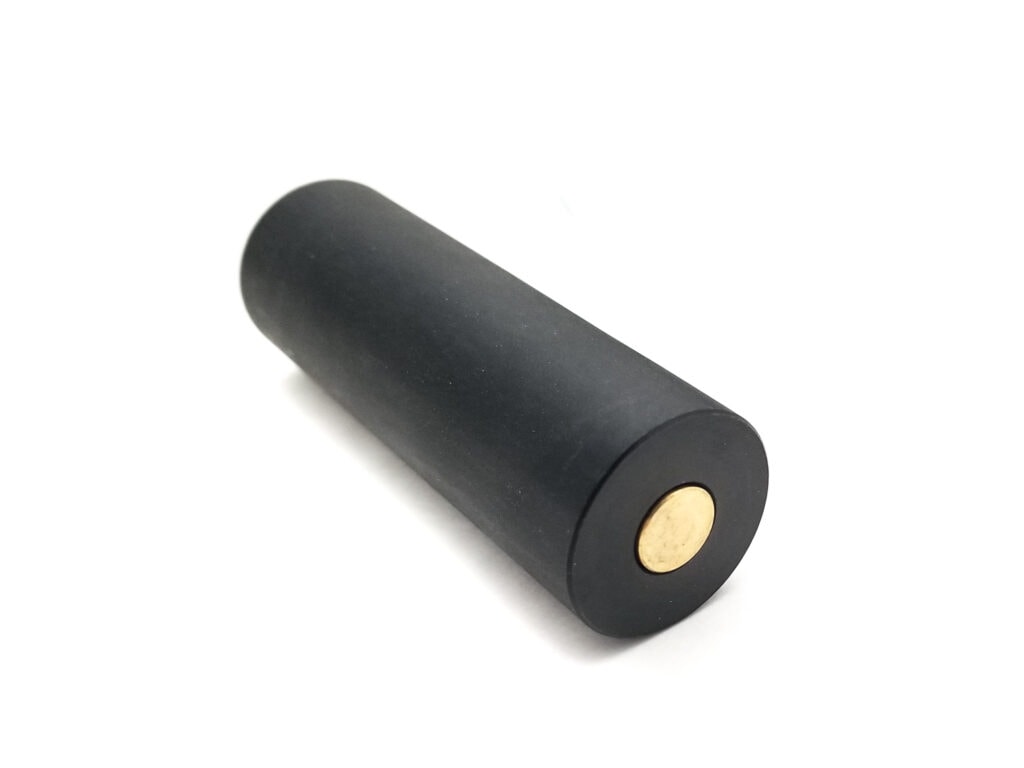
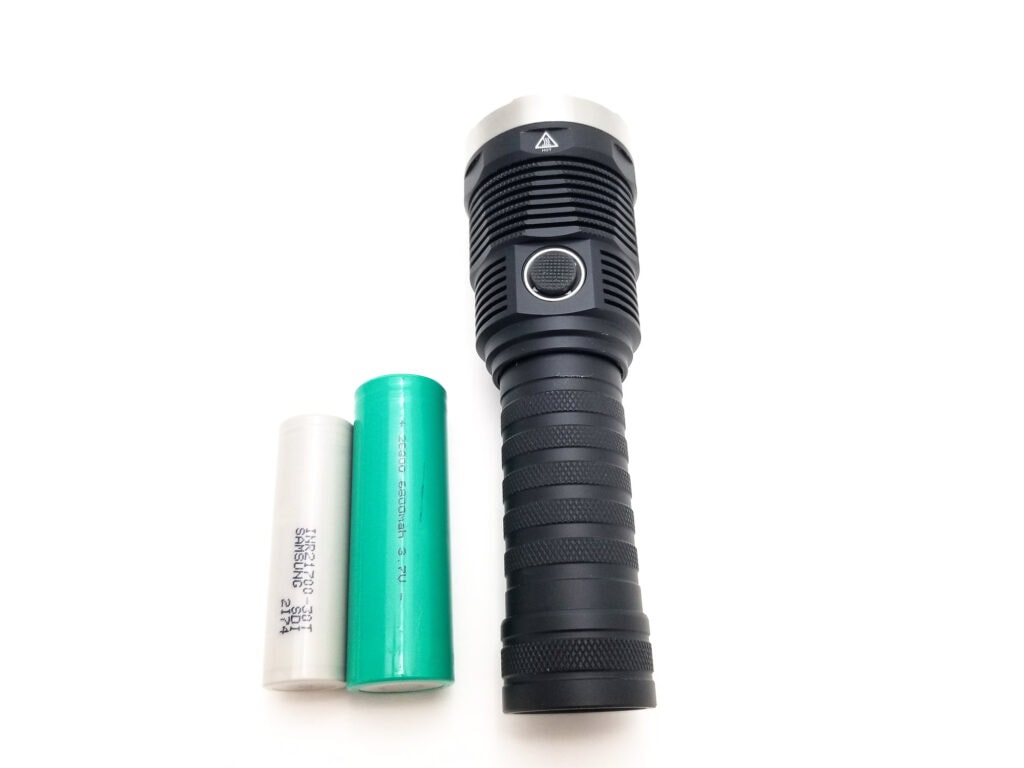
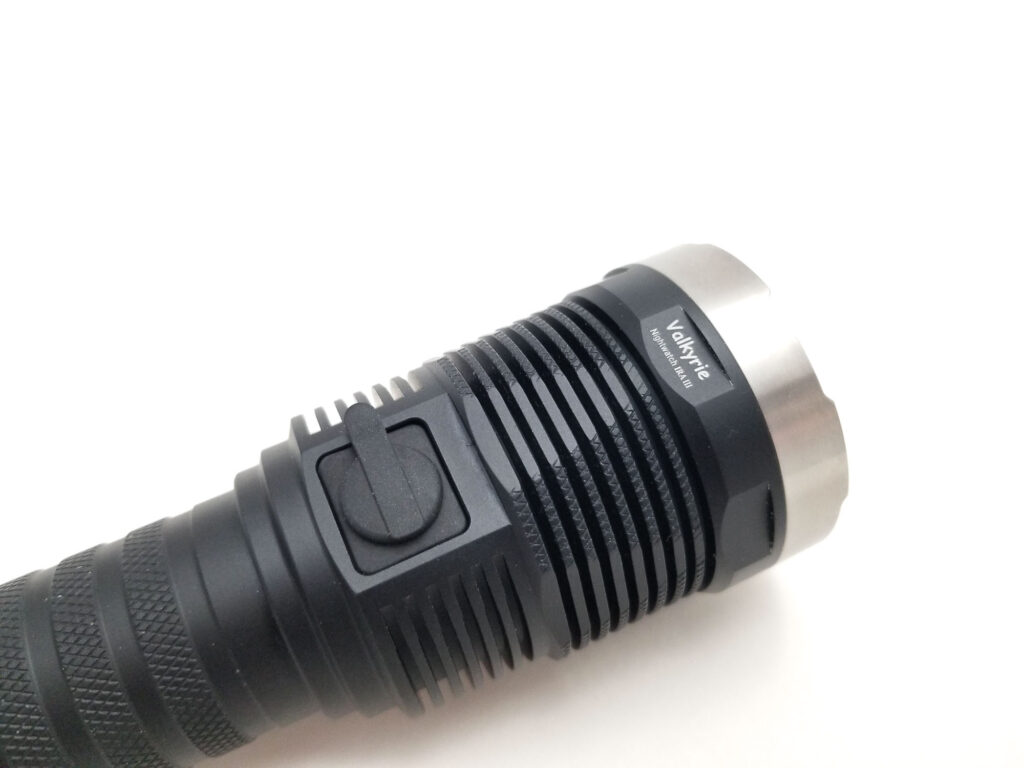
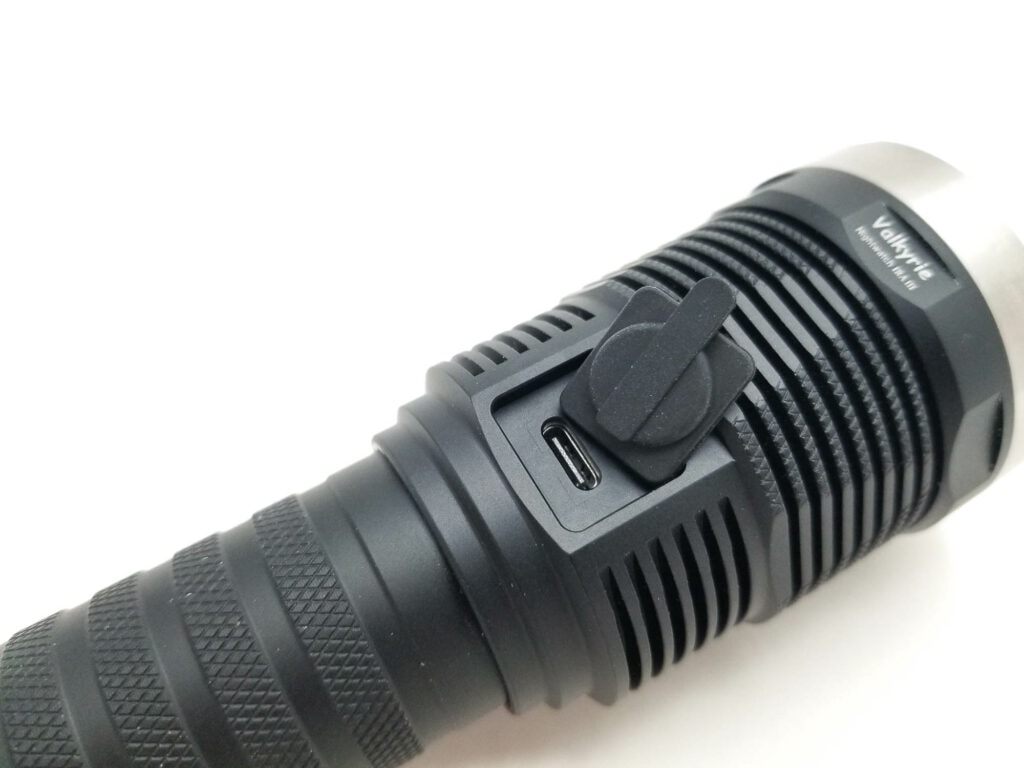
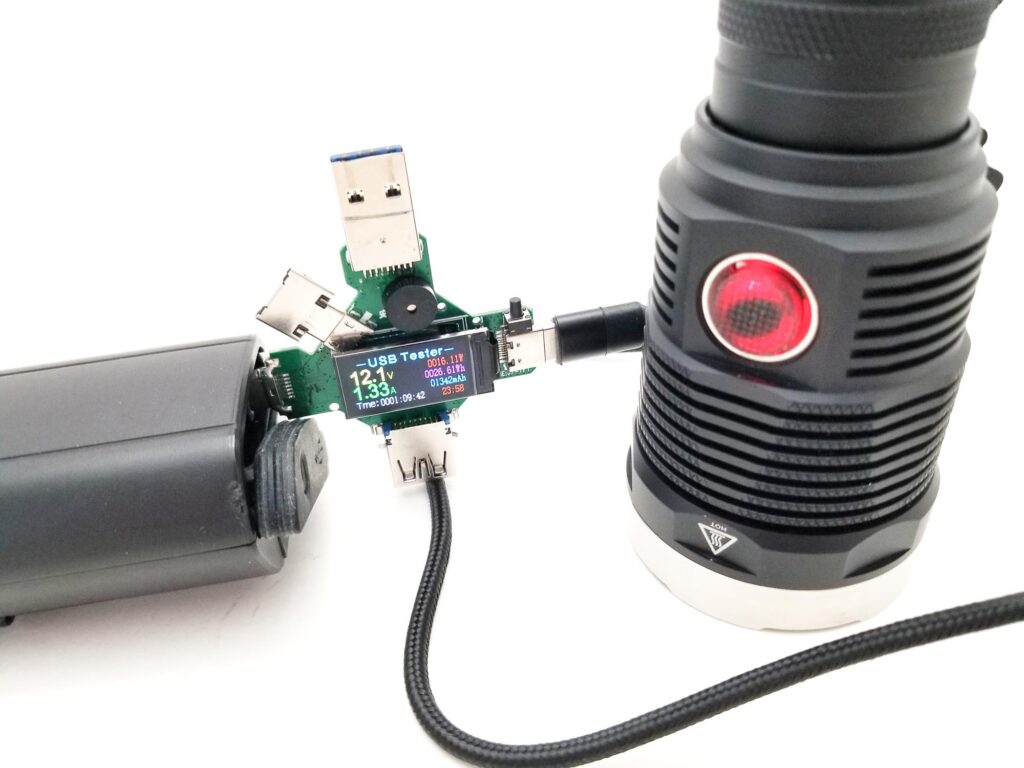
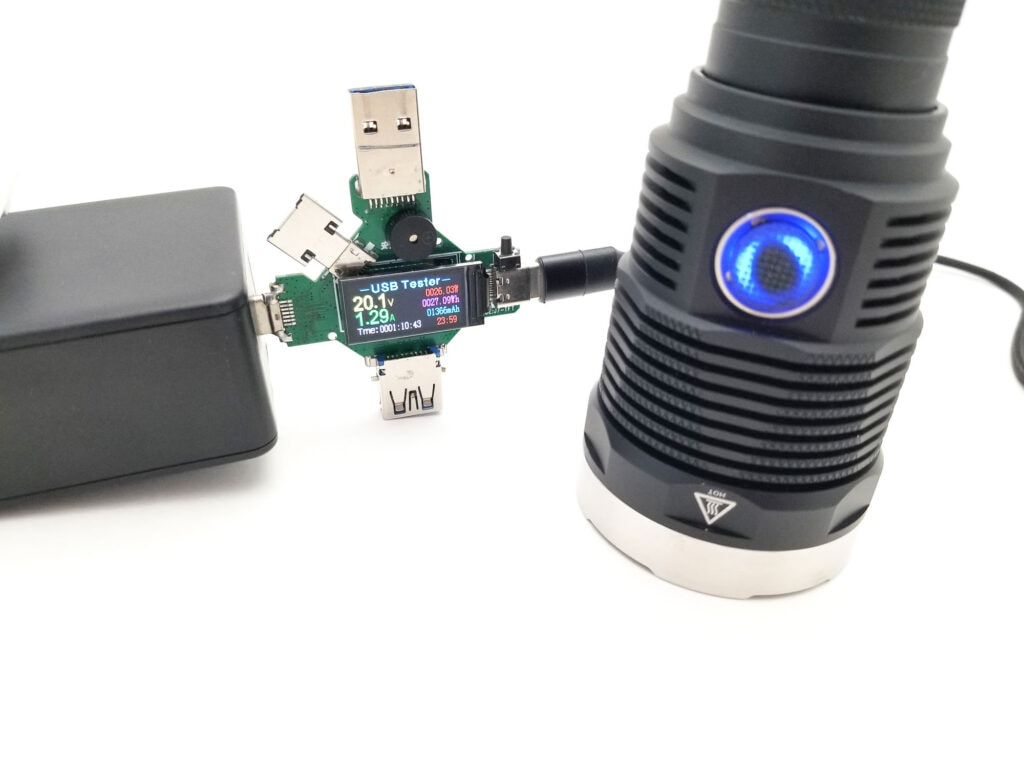
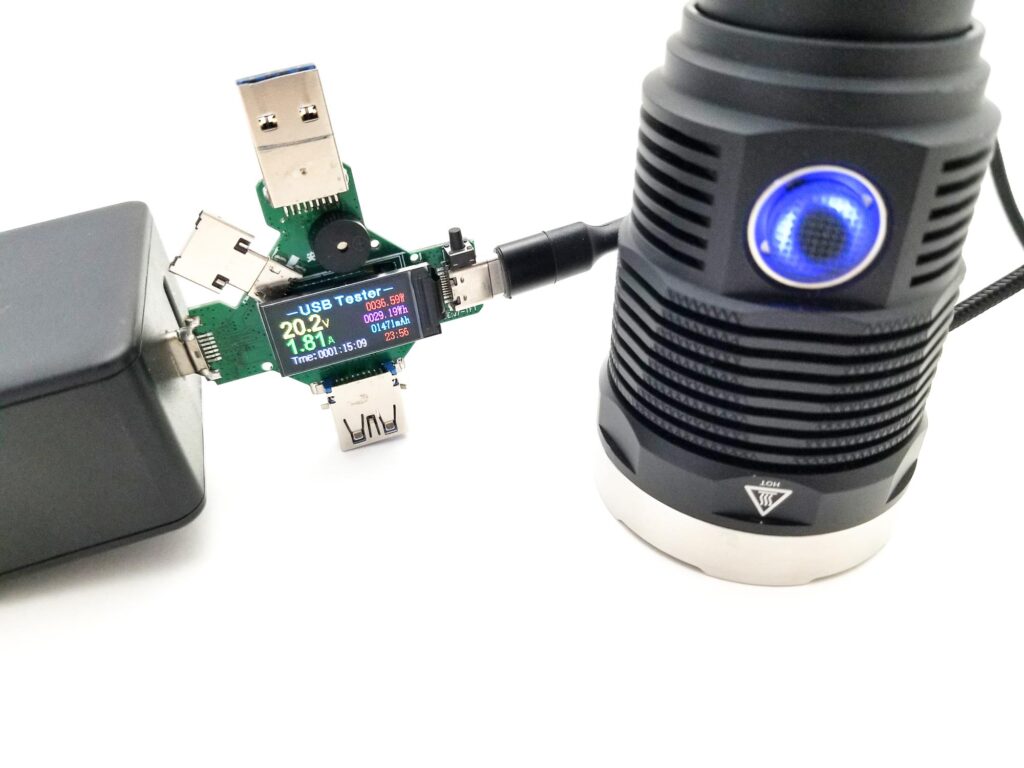
Performance test
Lumen measurements Nightwatch NI03s
How Lumens are Measured: Understanding ANSI FL1 Standards How Lumens are Measured: Understanding ANSI FL1 Standards: The ANSI FL1 standards specify that output in lumens should be measured 30 seconds after turning on, as this is the standardized time for measuring brightness according to the industry standard. This is why we focus on this part in our measurements. The ANSI FL1 standards require an ambient temperature of 22 ± 3°C. We record the ambient the ambient temperature to identify potential reasons for any observed discrepancies.Lumens are measured in my 50 cm integrating sphere with a Digi-Sense 20250-00 data logging luxmeter. The sphere has been calibrated with a Convoy S2+ measured to 260 Lumens and the figures are within 10% of actual. Current was measured with my Thisinde B18B+ multimeter with 14 gauge wires on banana plugs in the meter and high currents with my FY219 clamp meter with a piece of 10 gauge wire in the loop. Measurements were taken using a fully charged Samsung 40T3 4000 mAh 21700. I also ran Turbo with the Nealsgadgets Lishen LR2170HP 3000 mAh 21700 from the Nightwatch Chaos, and another Nealsgadgets special 6800 mAh 26800 cell I got with the first Valkyrie for comparison. Note these advertised output specs are specifically for the LR2170HP.
| Mode | Amps at turn on | Specs | turn on | 30 sec | 10 minutes |
|---|---|---|---|---|---|
| Low | 190 mA | 170 | 106 lm | 106 lm | – |
| Middle 2 | 1.16 A | 1,000 | 578 lm | 578 lm | – |
| Middle 1 | 3 A | 2,300 | 1340 lm | 1340 lm | 1340 (40T) |
| High | 6.19 A | 3,800 | 2595 lm | 2570 lm | 2337 (40T) |
| Turbo Neal’s LR2170HP | 51 amps | 18,500 | 13,038 lm | 1107 lm | 123 lm |
| Turbo 40T3 | 43 amps | ? | 10,824 lm | 9594 lm | 246 lm |
| Turbo Neal’s 26800 | 40 amps | ? | 10,209 lm | 9225 lm | 369 lm |
*NOTE: Runtimes were conducted with the Samsung 40T3, with output specs obtained using both the 40T3 and Lishen LR2170HP. Turbo runs were also conducted using the LR2170HP and 26800 cells for comparison.
It’s official! The NI03S is the brightest single LED, single cell flashlight on the market. This output beats many quad XHP50.2 lights, and tromps every single cell flashlight out there. At 13,038 Lumens at start, it’s way down from Nightwatch’s advertised 18,500 lm, but still, this very impressive! The current is probably higher with the tailcap on, but 51 amps is a lot. To go with the output, you get some serious current figures for a single LED, single cell flashlight. The output is very high, but the step downs are also pretty fast nonetheless. Since you can use 21700 or 26800s with the Super Valkyrie, I of course tested Turbo with some other batteries to see how it affects the output. The results (at turn-on):
Queen Battery QB26800: 38 amps
Samsung 50S: 43 amps
Samsung 30T: 49 amps
Parasitic drain:
- 2.10 mA
Nightwatch NI03s Battery Life: Runtime graphs
How Runtimes are Measured: Understanding ANSI FL1 Standards About ANSI FL1 runtime standards: The runtime is measured until the light drops to 10% of its initial output (30 seconds after turning on). This does not mean that the flashlight is not usable anymore. The last column shows how long the light actually works till it shuts off. If there is a + symbol, it means that the test was stopped at that particular point, but the light was actually still running. This happens on certain occasions, with certain drivers, firmware, or batteries.Lumens are measured in my 50 cm integrating sphere with a Digi-Sense 20250-00 data logging luxmeter. The sphere has been calibrated with a Convoy S2+ measured to 260 Lumens and the figures are within 10% of actual. I used a fully charged Samsung 40T3 4000 mAh 21700 for this test and tested Middle 1, High, and Turbo modes. I also ran Turbo with the Lishen LR2170HP and a 26800 cell for comparison.
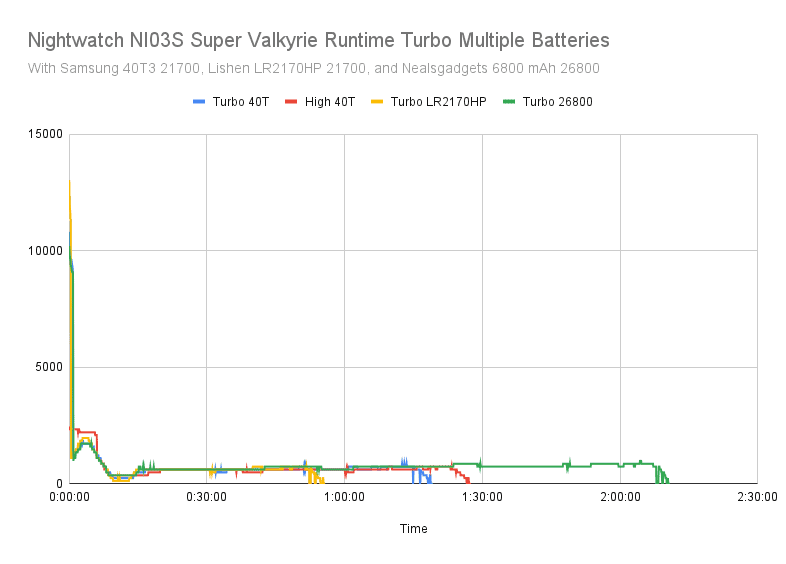
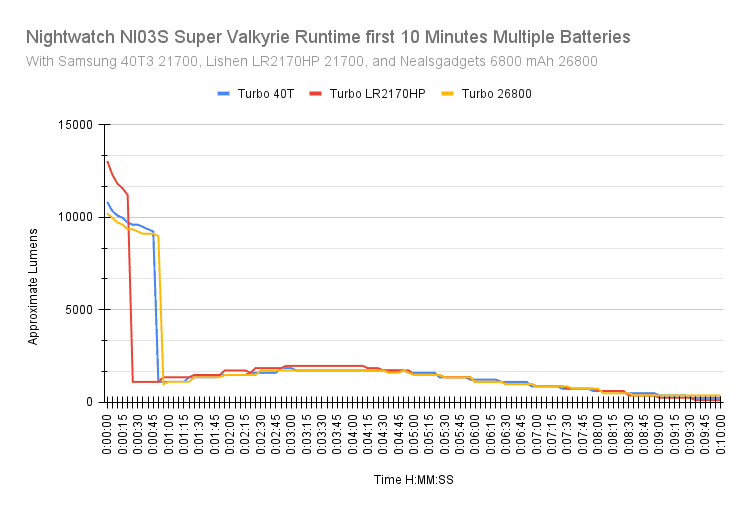
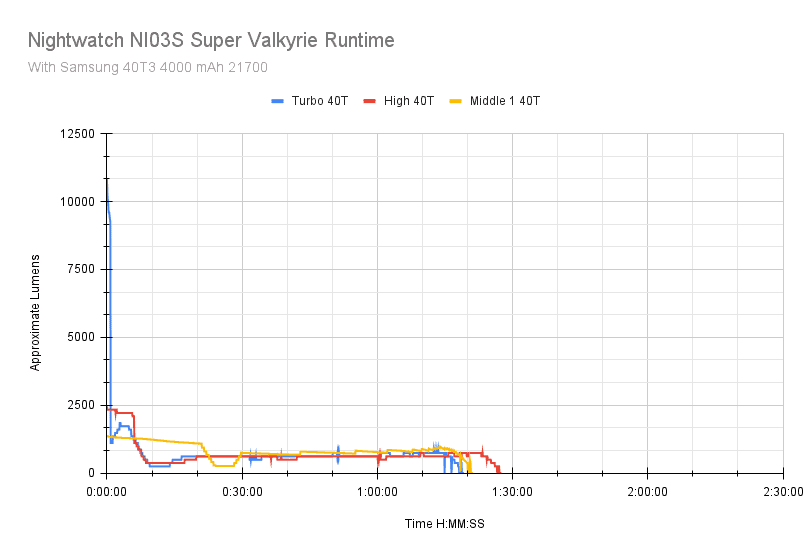
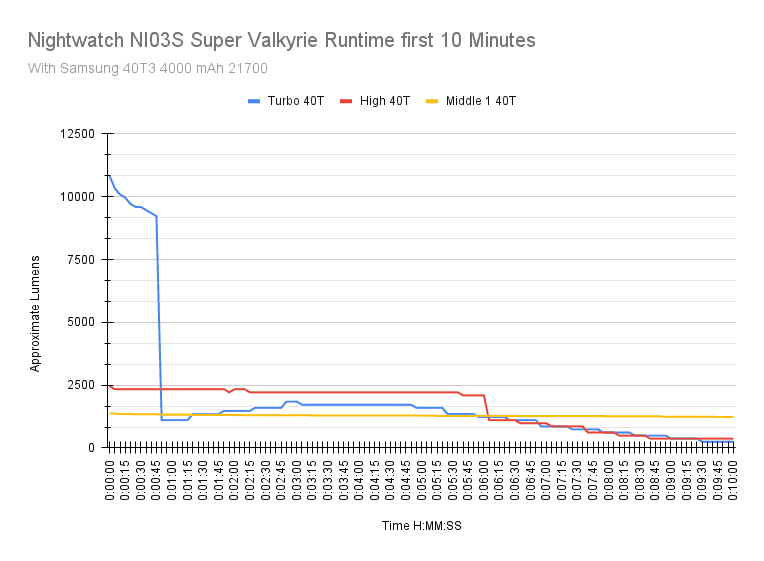
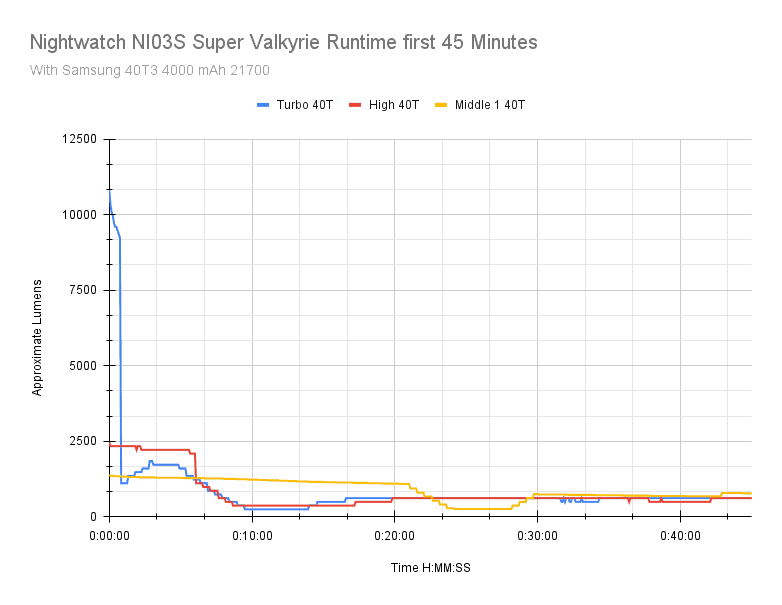
| Mode | Specified runtime | Measured runtime ANSI | Time till shut off |
|---|---|---|---|
| Middle 1 | ? | 1h 20m | 1h 20m |
| High | ? | 1h 27m | 1h 27m |
| Turbo LR2170 HP | ? | 6m 30s | 55m 25s |
| Turbo 26800 | ? | 6m 30s | 2h 10m |
| Turbo 40T | ? | 6m 55s | 1h 18m |
As expected, the runtimes are short. The light does automatically regulate the output based on temperature though. The output on Turbo for all the batteries I tested starts out high, and the output is largely dependent on the internal resistance of the cell, with the ceiling topping out at around 55 amps, or a bit over 150 watts. The Lishen cell gives the highest output by a fair margin over the 40T, 50S, and even the spicy green wrapper Nealsgadgets 26800.
The ANSI runtimes are all under 10 minutes, and once the light thermally recovers and increases the output, the sustained output isn’t bad. However, the downside of high energy consumption is heat: Lots of it. Even with all the thermal mass and good heat sinking, it still got hot fast. On the LR2170HP, the head hit 41C in 5 seconds from 24 ambient. At 10 seconds it was 49 C, at 30 seconds it was 50 C and the output was dropping fast, evidence that the external temperature probe is telling the driver to pull the current back due to the MCPCB heating up more quickly than the driver PCB.
The sustained output isn’t very impressive. By 9 minutes into the Lishen Turbo test, the output was under 200 Lumens. It was a similar story for the other batteries, albeit the ‘lower’ current cells maintained Turbo and held the output a bit better (not by much), because they all started stepping down by 30-40 seconds. The thermal regulation isn’t terrible, and doesn’t take the output on a see-saw.
On every test except M1, the light was hand-friendly for about 25 minutes, but beyond that, don some gloves or switch to a lower mode since the tube and body heat to over 54 C. Middle 1 had the best sustained output at around 1300-1100 Lumens for the majority of the test.
Turbo can be reset after the step down, but the output will drop almost immediately due to heat. As expected your best output with this light is going to be on the 26800 cell, where the extra capacity affords longer runtimes. The LVP works just fine, and pulls the output very low with the switch LED blinking red. You do get visual LVP, with the light blinking intermittently for the last 5 or so minutes of each test before shutting down.
Bonus! I threw together a comparison graph of some other high output single LED flashlights I tested previously to show how they compare to the NI03S, including the SFH55/NB 90.16 equipped Amutorch XT60. You can see the same Turbo step down issue with the original NI03 has carried over to the NI03S. The NI03 holds a higher output longer on Turbo, but after the step down it drops the output very low whereas the Amutorch holds higher output much longer.
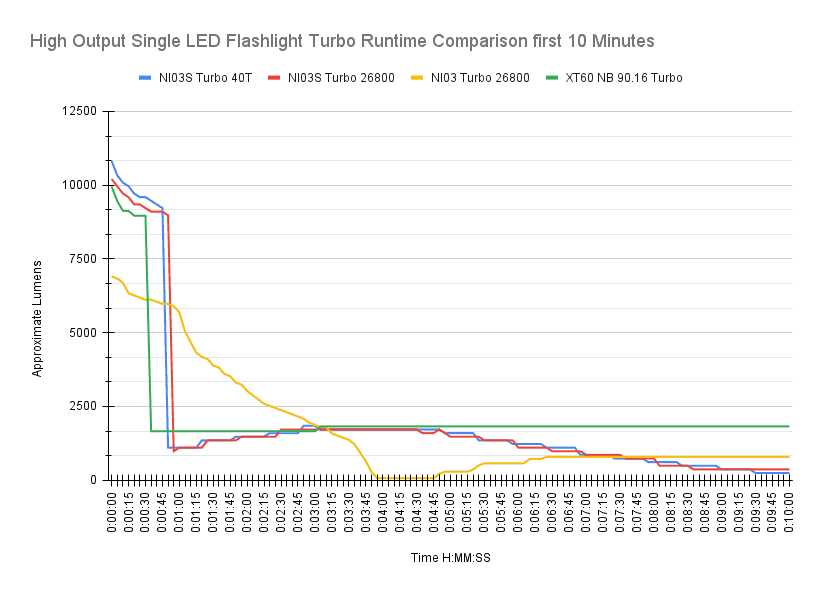
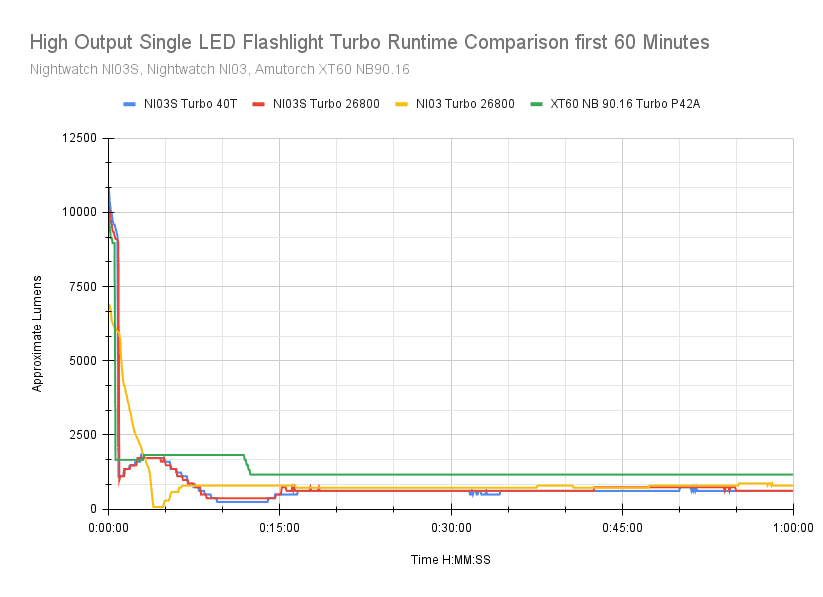
Peak beam intensity and beam distance measurements
About Peak beam intensity: Understanding ANSI FL1 Standards About peak beam intensity The calculated value of distance in meters at which the flashlight produces a light intensity of 0.25 lux. (0.25 lux is about the brightness of a full moon shining on an object). This means that the intensity has decreased so much, it becomes difficult to see darker objects, or objects that don’t reflect light. The columns ‘Meters’ and ‘Yards’ use rounded numbers.Beam distances are measured using a Uni-T UT383S luxmeter measured indoors at 5 meters using the included fully charged Lishen LR2170HP batteries. Measurements taken at 30 seconds.
| Mode | Specified | Candela measured | Meters | Yards |
|---|---|---|---|---|
| Low | ? | 1200 | 14 | 15 |
| Middle 2 | ? | 6700 | 164 | 147 |
| Middle 1 | ? | 13,750 | 235 | 257 |
| High | ? | 23,900 | 309 | 338 |
| Turbo | 140,000 cd | 12,375 | 222 | 243 |
| Turbo at turn on* | 135,950 cd | 737 | 806 |
The product specs over at Nealsgadgets only lists a candela figure for Turbo mode of 140,000 cd and 748 meters. No specs are listed in the manual though. I darn near hit that 748 meter claim on the Lishen cell at start, but by the ANSI measurement, it’s way down to just 222 meters due to the heat and the output pulling back. The other modes are much more stable than Turbo. Still, this is super-impressive distance for a huge LED, and it’s sheer luminous flux that’s propelling those photons.
Beamshots
I compared the Nightwatch NI03S to some other ultra powerful flashlights. These lights all produce many, many thousand of Lumens. Photos taken with my Samsung Note 8. The 95 meter shots with the camera set to 0.3s ISO 200 and 5000K WB.
Beamshots of the following flashlights compared:
- Nightwatch NI03 Valkyrie
- Nightwatch NI03S Super Valyrie
- Amutorch XT60 NB90.16
- Amutorch XT45 NB90.16
- Astrolux FT02S
- Nitecore TM12K
- Nightwatch NG01 Legend
- Lumintop D3
- Lumintop PK21
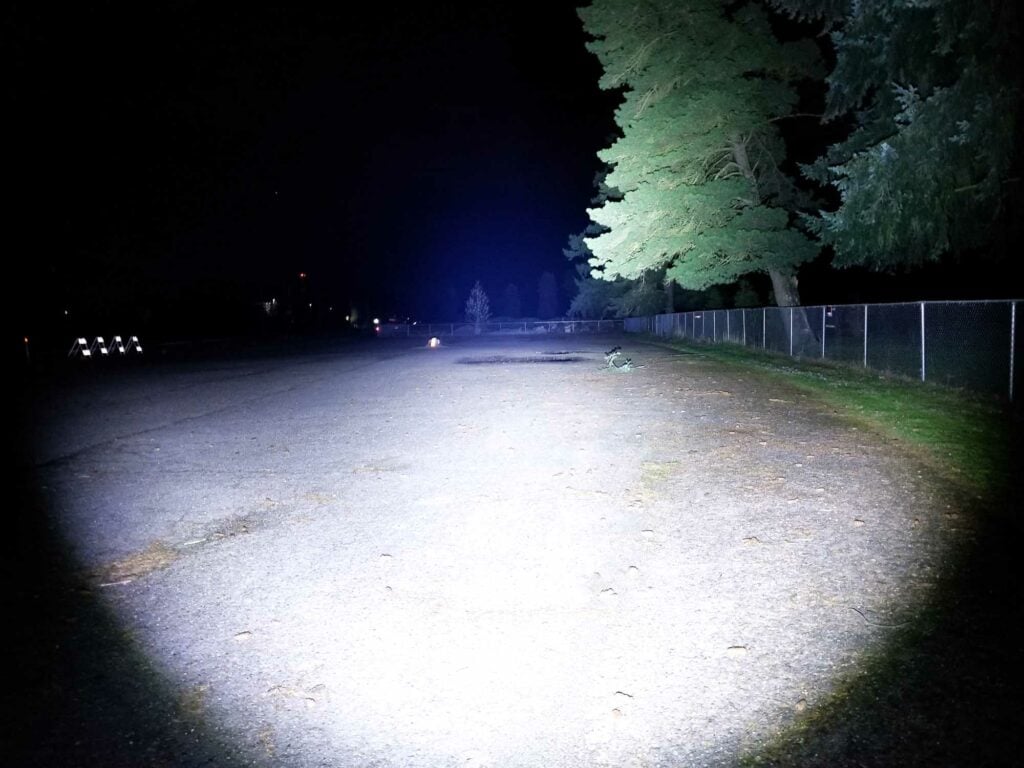







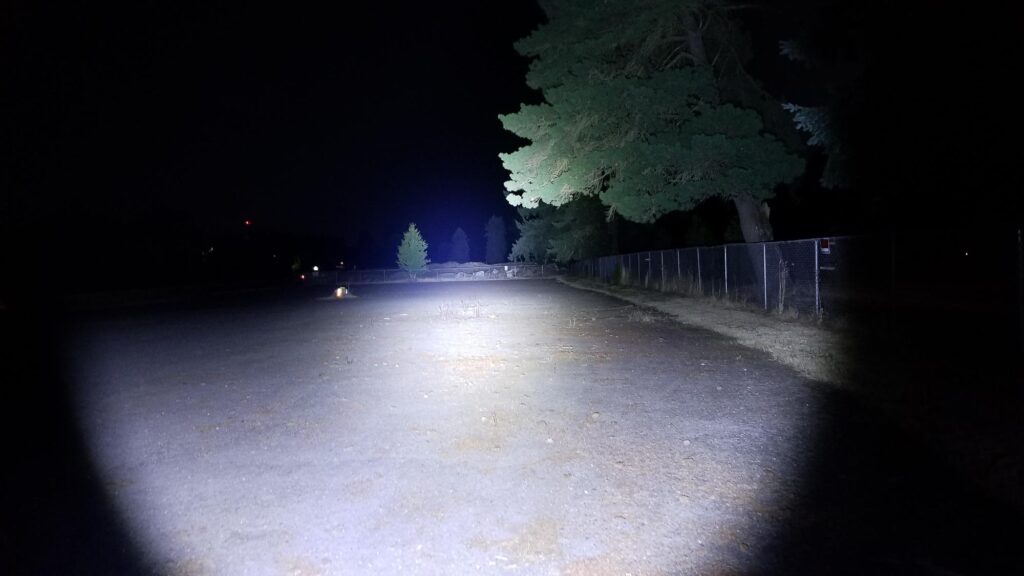
Disclaimer: This flashlight was sent to me for review at no cost by Nealsgadgets. I have not been paid to review, nor have I been holding back on problems or defects.
Final Verdict
Pros
- The brightest single cell, single LED flashlight available
- Solidly built
- Well designed with good heat sinking
- Super fast USB type C PD charging
- Nice 26800 to 21700 adapter sleeve
- Great beam distance
Cons
- Fast step downs
- Unimpressive sustained output
- Way down on output specs
- Short runtimes
- Missing power bank feature
- Sample wouldn’t charge on a standard USB charger
- LED was not centered
Explanation on star ratings:
1: Avoid: a match would be a better choice – 2: Poor: significant defect or issues; almost unusable – 3: Average: some defects or issues; but still usable 4: Good: recommended (minor issues) – 5: Great: highly recommended

2.5 stars: ★★⋆
While our star rating provides a reliable indicator, we encourage you to read the full review to make an informed decision based on your own needs and preferences.
Leave it to Nightwatch to deliver a somewhat groundbreaking flashlight, but also one with a bit of duplicitous character. The Nightwatch NI03S Super Valkyrie has just ascended to the precipice of the flashlight hierarchy as the brightest single LED, single cell flashlight on the market (albeit briefly) The Lumintop Rattlesnake Gabriel tested (with a similar LED), beats the NI03S, but it makes do with two 21700s, so I think this light has more to give in terms out output.
To go with the Valkyrie’s output is surprisingly good beam distance from a huge LED in a reflector measuring just 50 mm across. However, this kind of output in a smallish host is not without some drawbacks, and my testing shows the laws of physics and thermodynamics apply even to demigods like the Valkyrie (who knew?). All that power generates a lot of heat, and even with a stout host with good heat sinking, it still steps down quick-like, and doesn’t really maintain high output even with the 26800 cell.
On 21700s, it’s even worse, so don’t expect the same kind of sustainable high output as you’d get with something with a regulated driver, multiple batteries, and multi LEDs. That aside, the host is the same good quality unit I experienced with the non–super Valkyrie, and maintains the sound thermal properties.
The charging is another highlight here, with crazy quick power delivery approaching 40 watts, which I think is a great feature for the big 26800 batteries. I really miss the power bank feature though, and the inability to charge off a standard USB port or charger is a huge disadvantage and pretty unacceptable.
The UI, while serviceable, requires quick fingers for the shortcuts which might be annoying for some. I did experience the odd quality snafu with the off-center LED and finicky o-ring for the bezel, but otherwise no major issues.
What do I really think of the Super Valkyrie? I think this is a very fun light with a very high smile factor, but it’s not the most practical thing out there. If 1Lumen had a ‘wow factor’ or ‘smile index’ for adjudicating, this would get 5 stars and I’d call it a day, but we don’t. While I think this light can be improved a lot, as-is, the Super Valkyrie gets 2.5 stars.
Buy your Nightwatch NI03s with a discount
Get extra discount with our exclusive Nealsgadgets coupon: 1LumenNew or 1Lumen711
1lumen selects and reviews products personally. We may earn affiliate commissions through our links, which help support our testing.